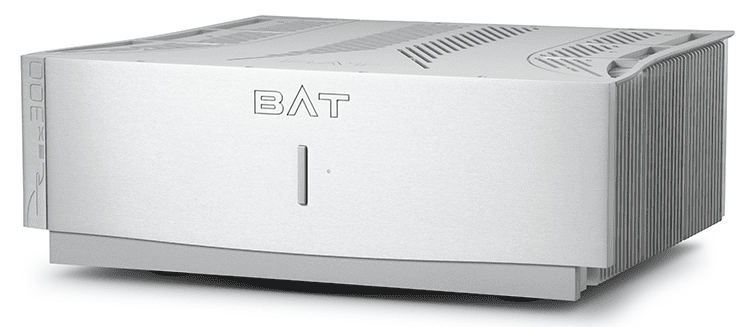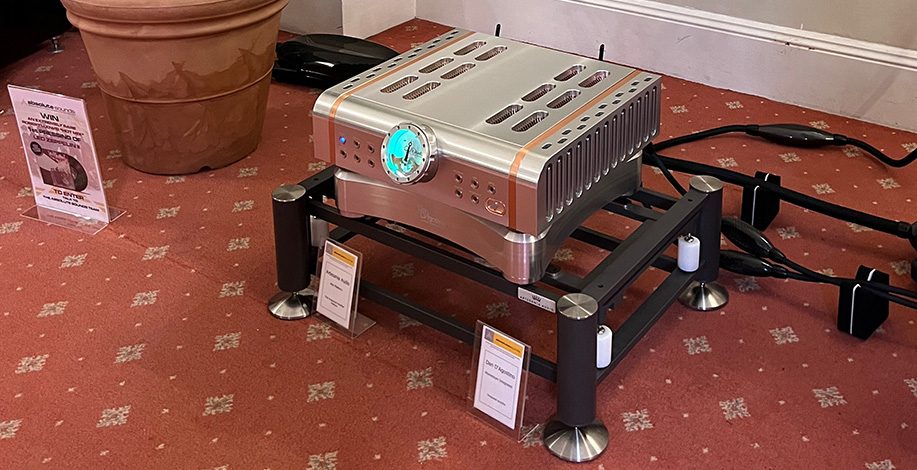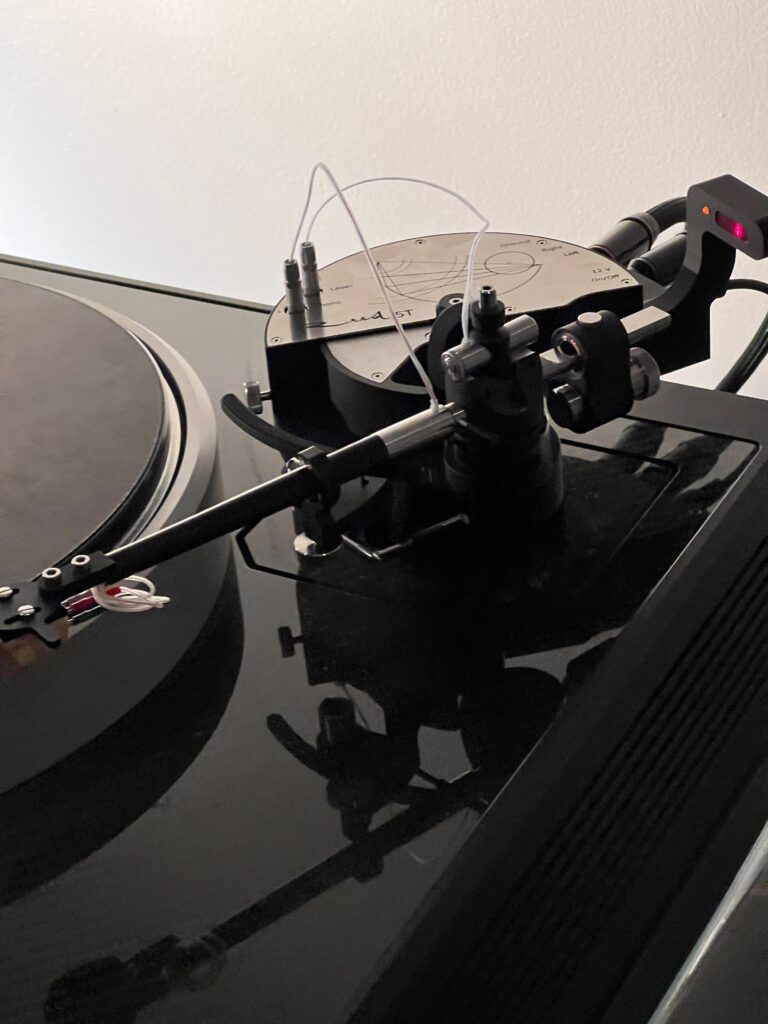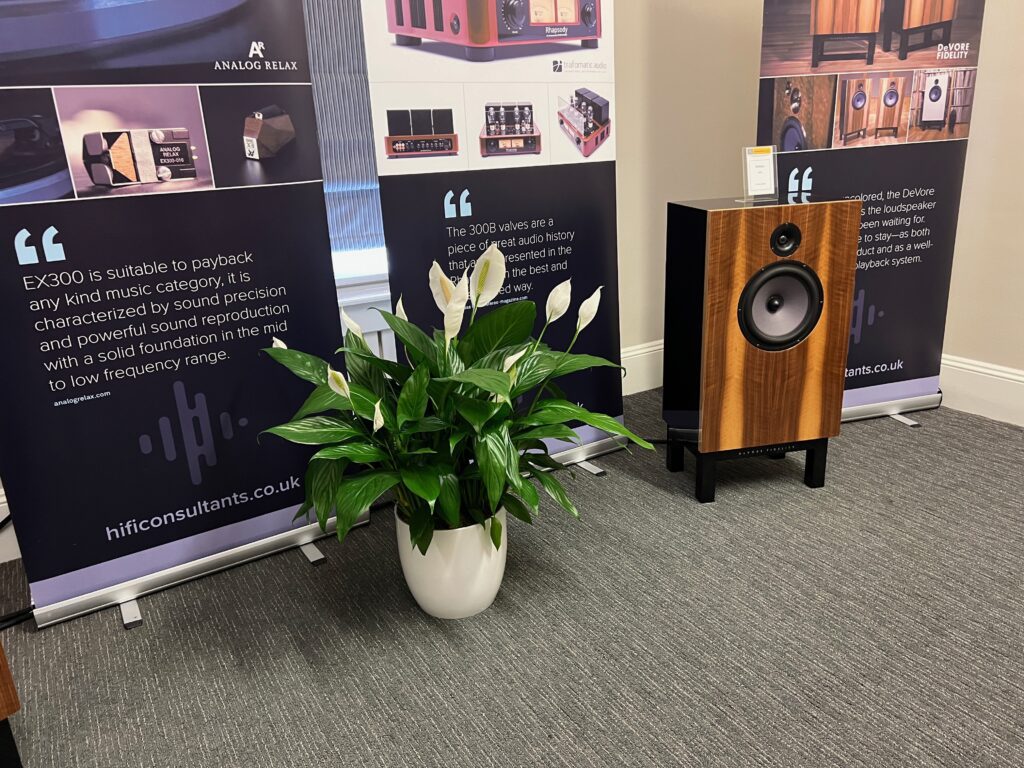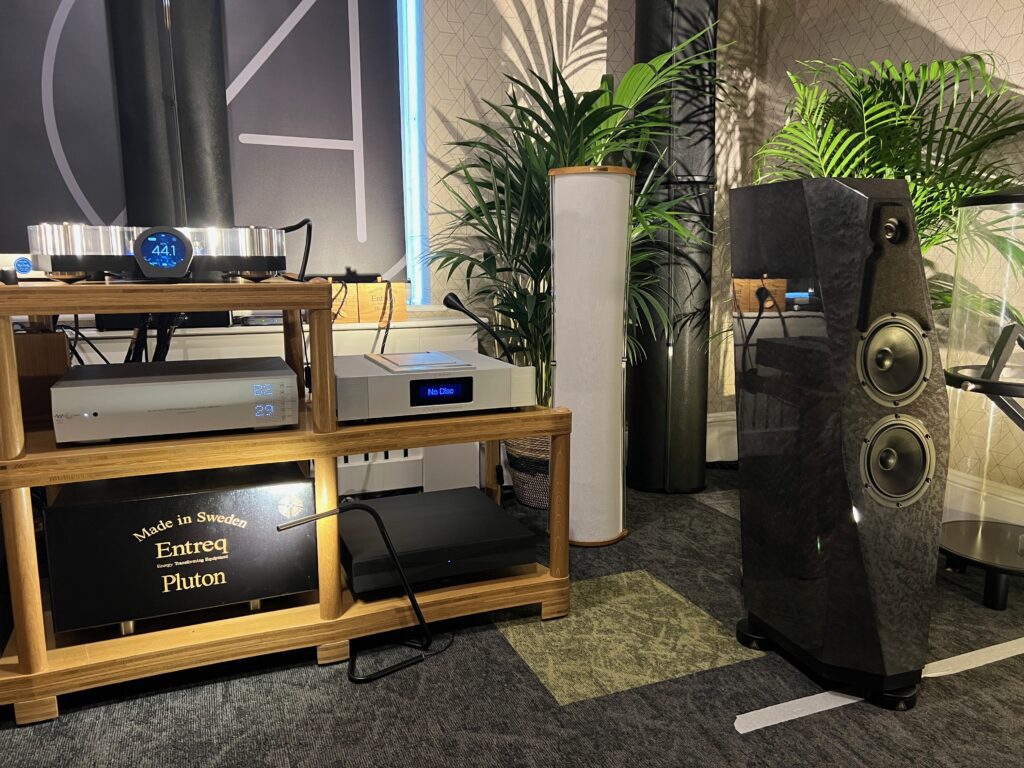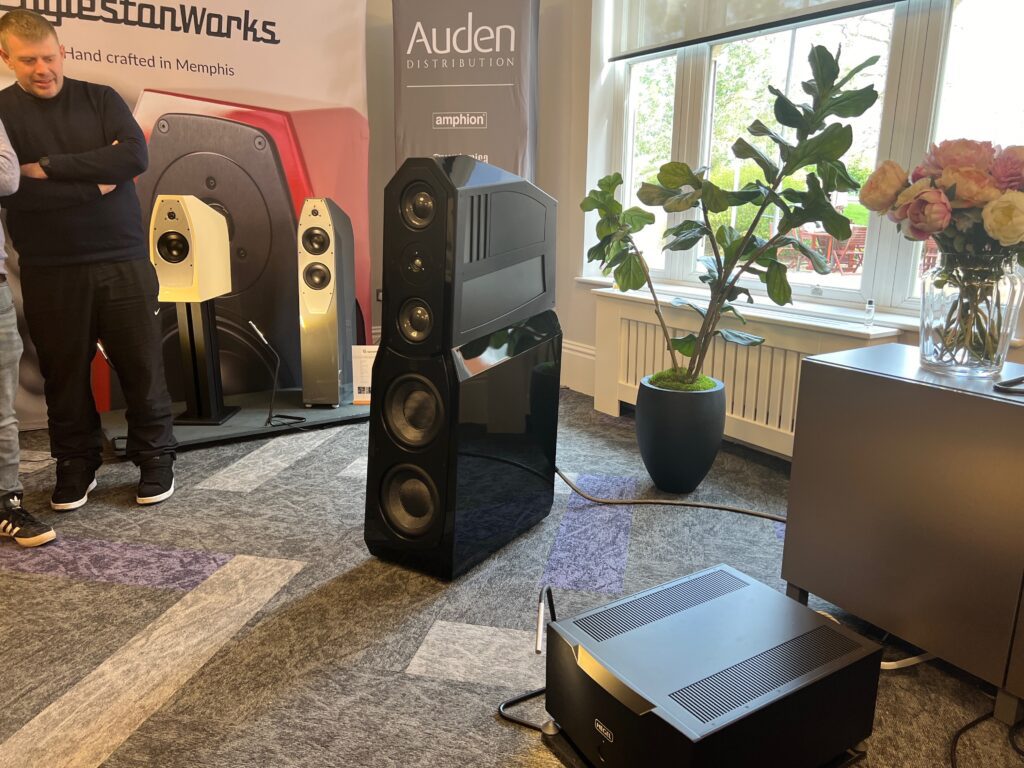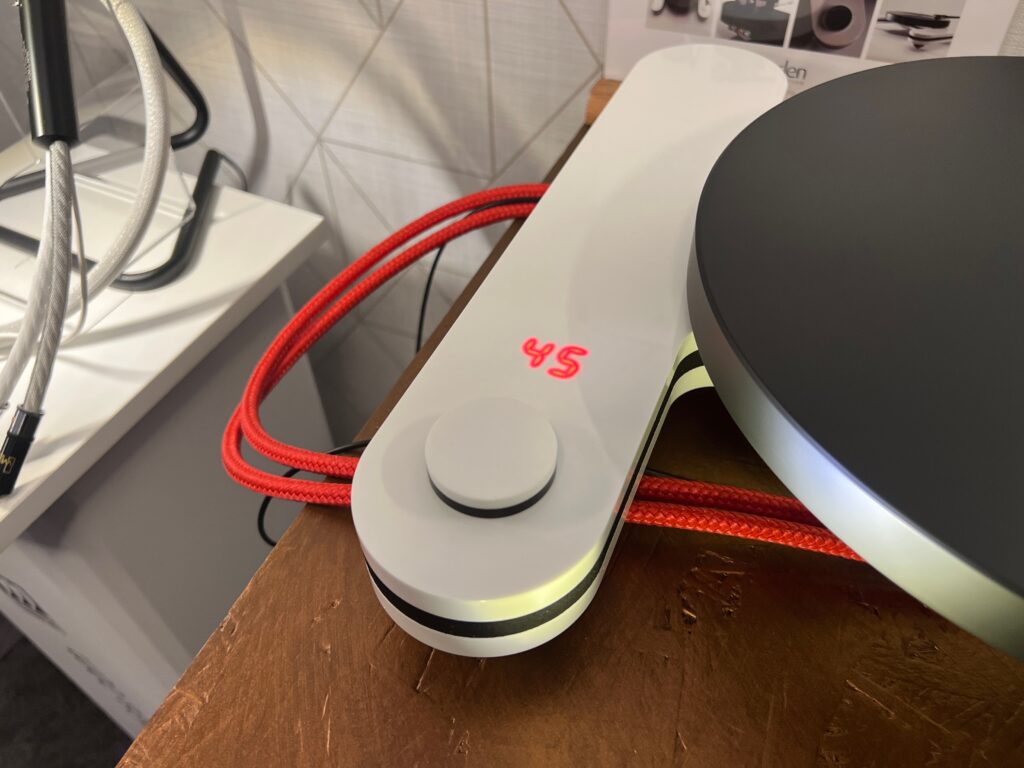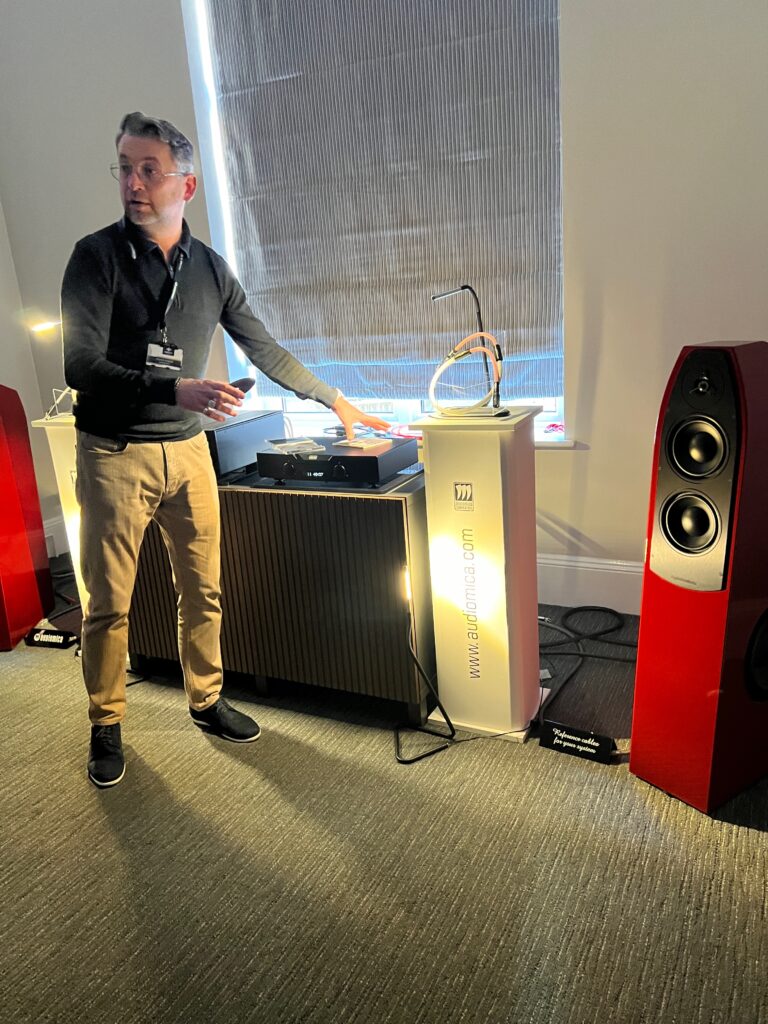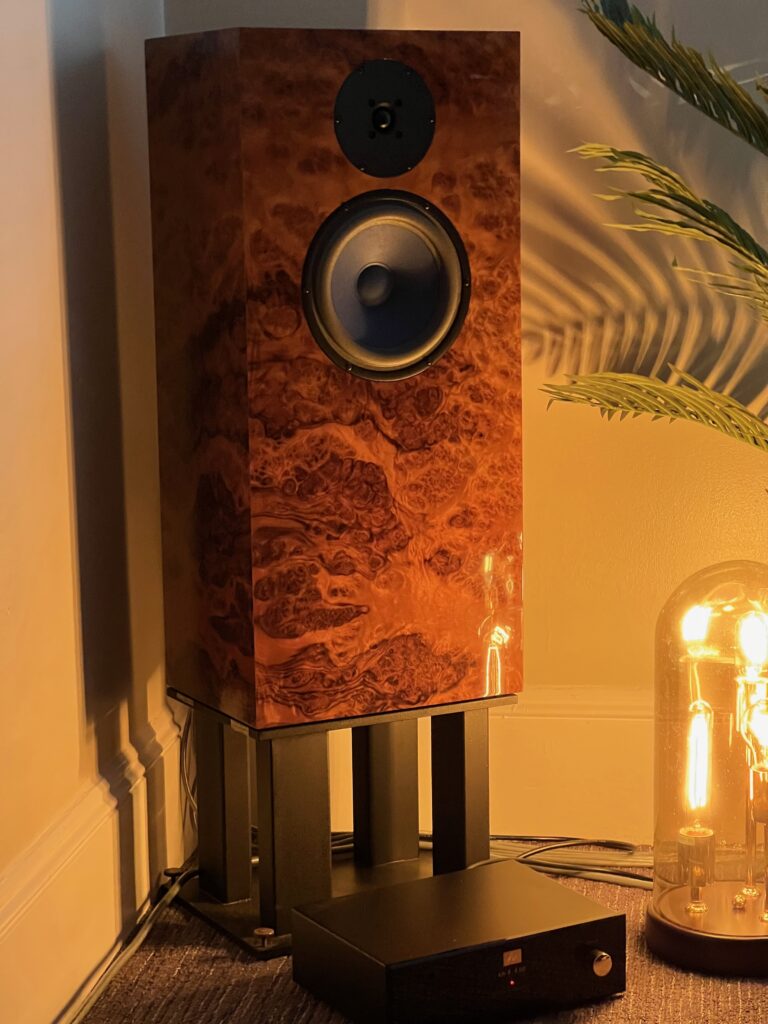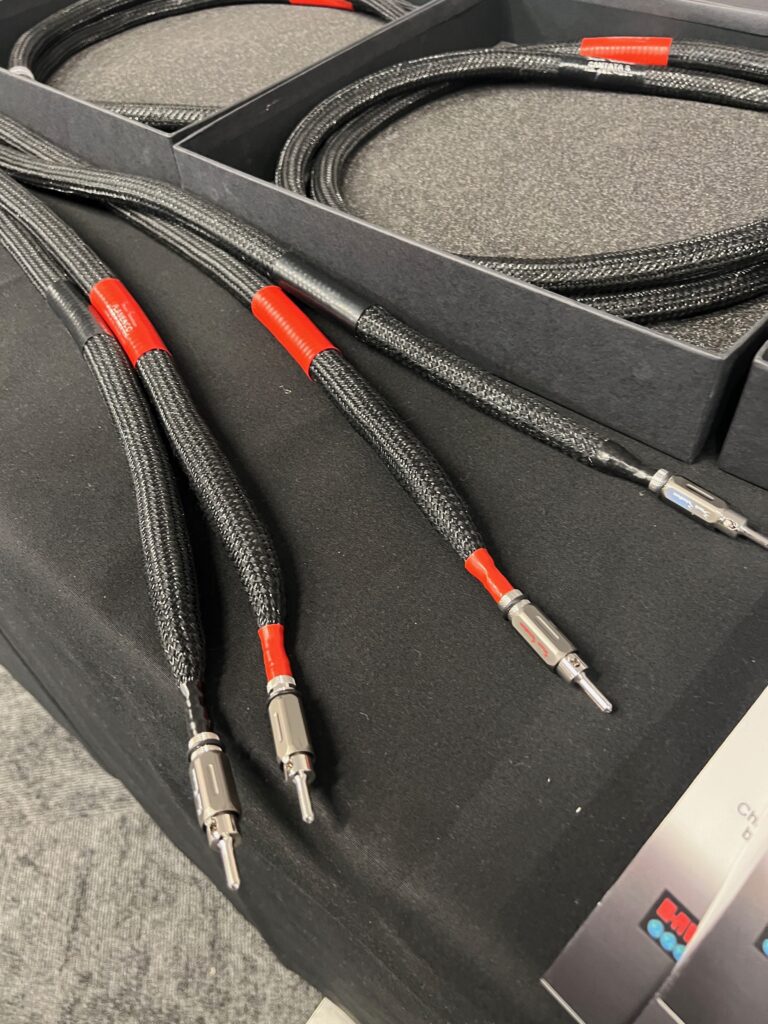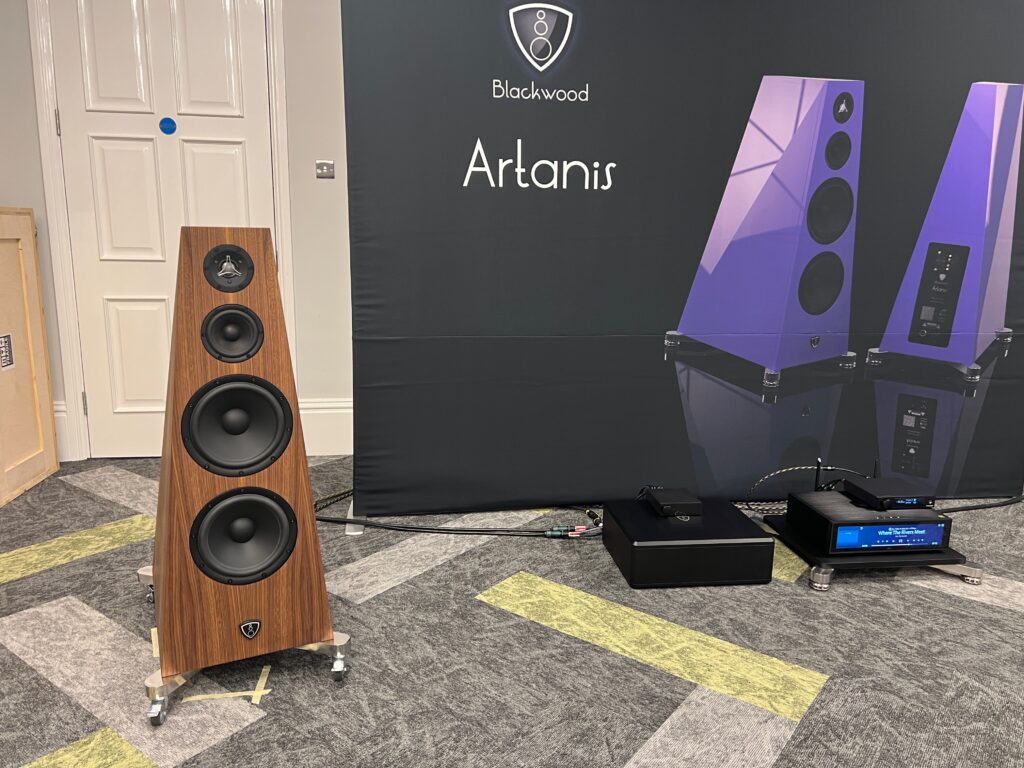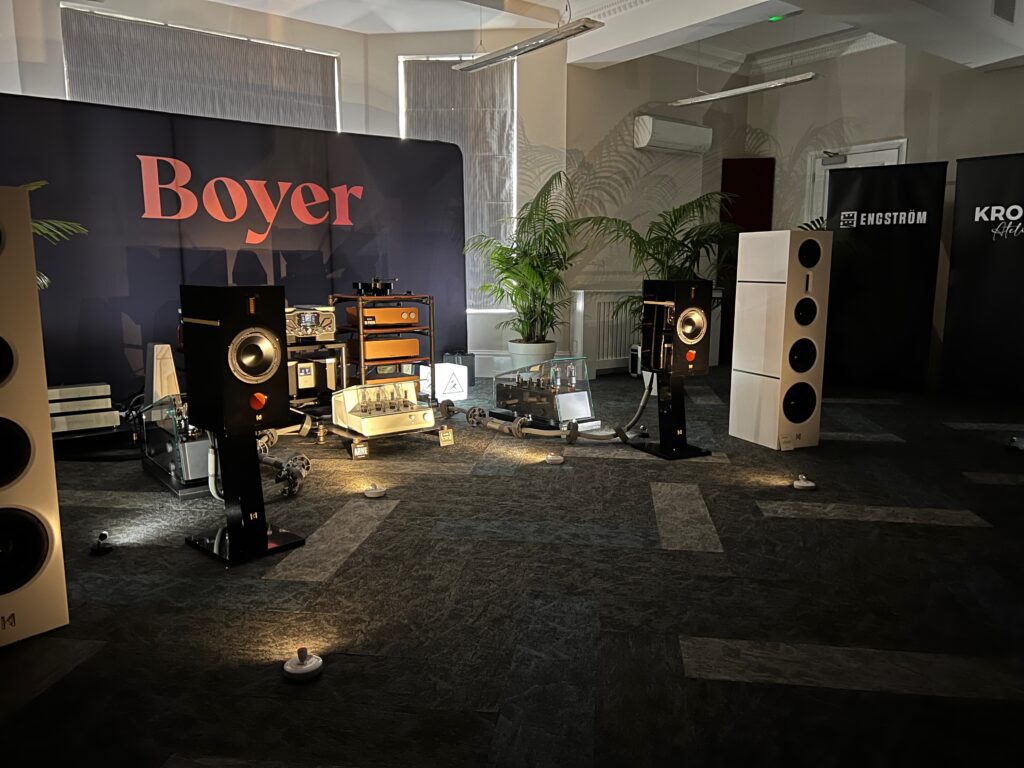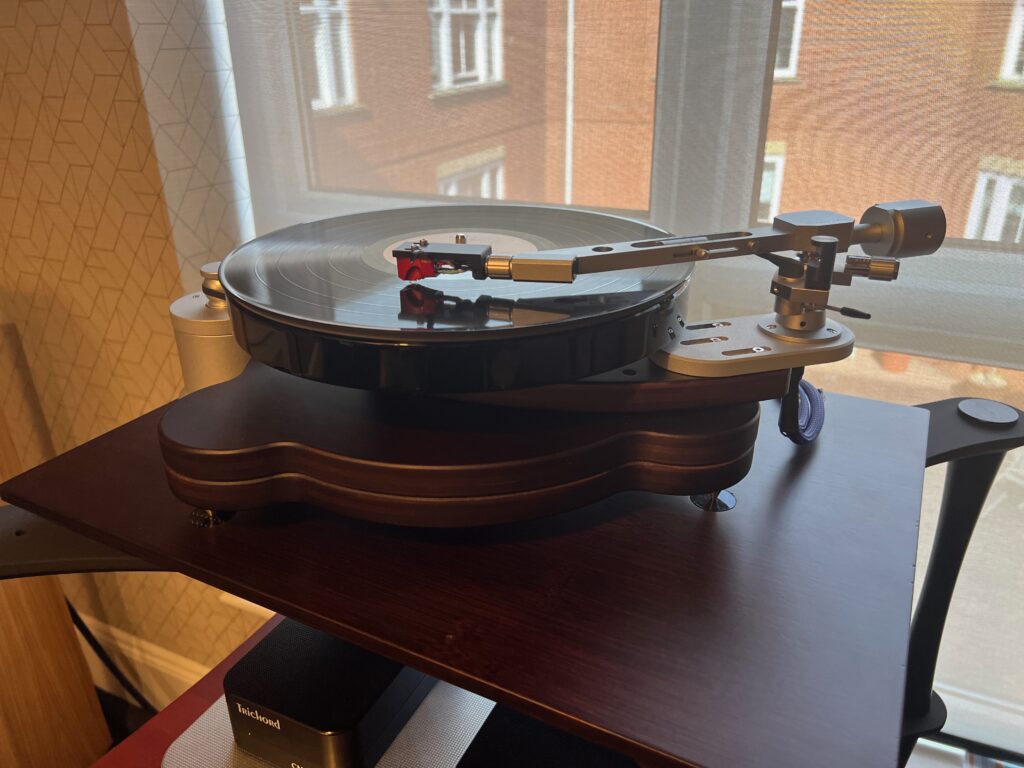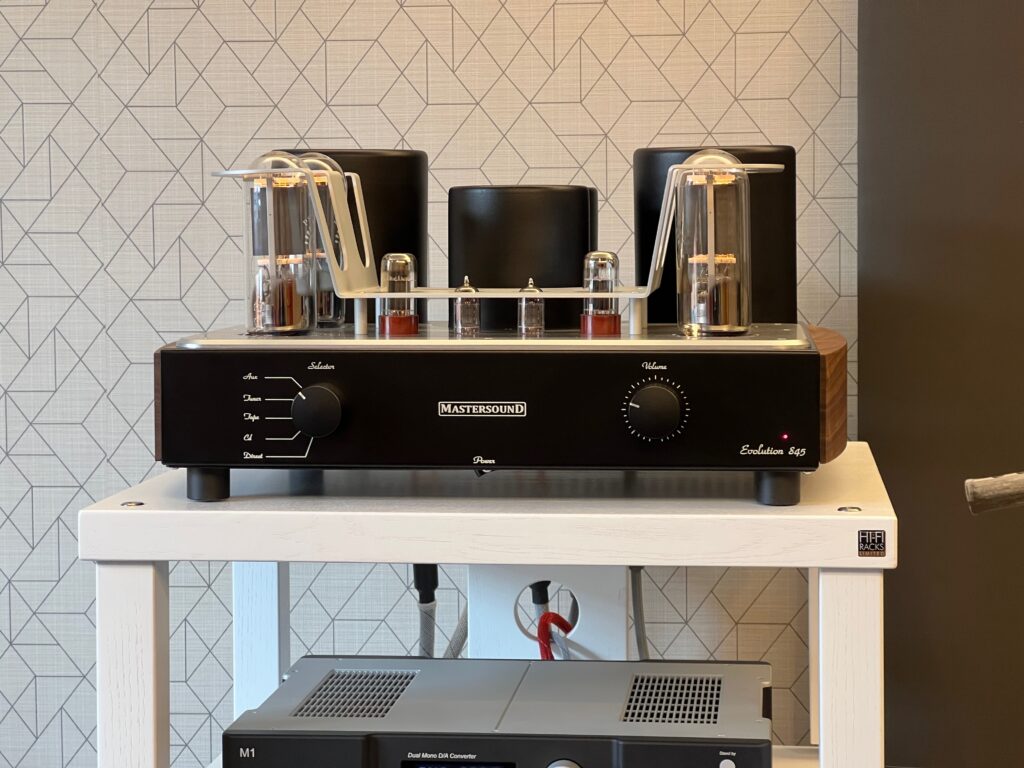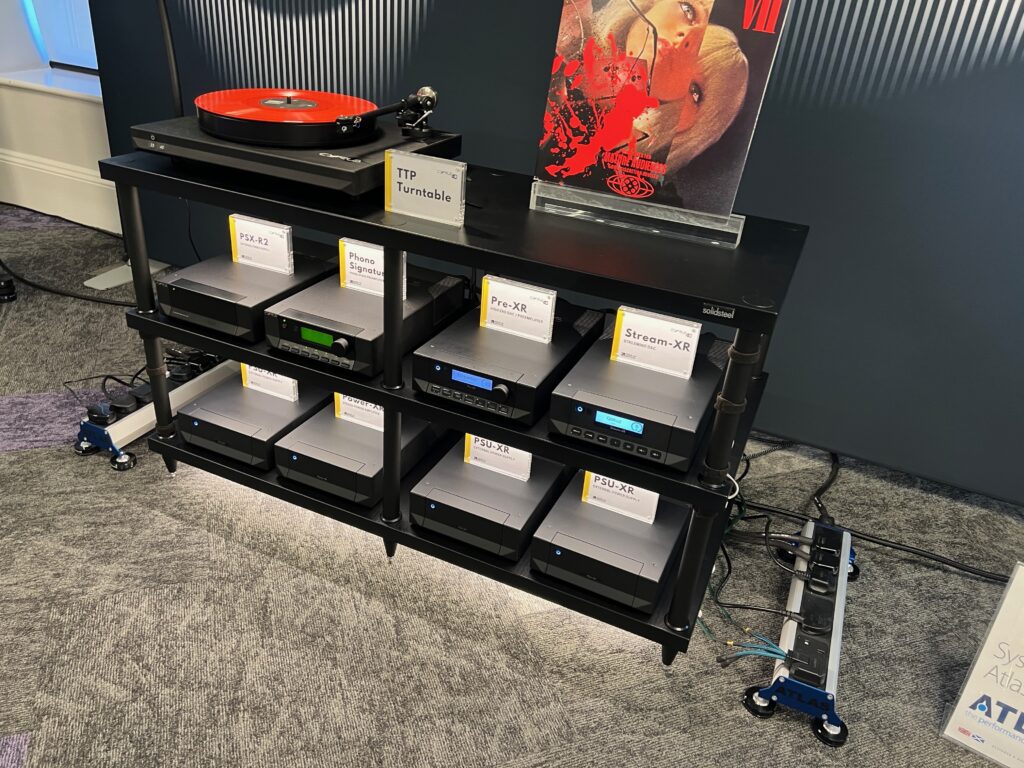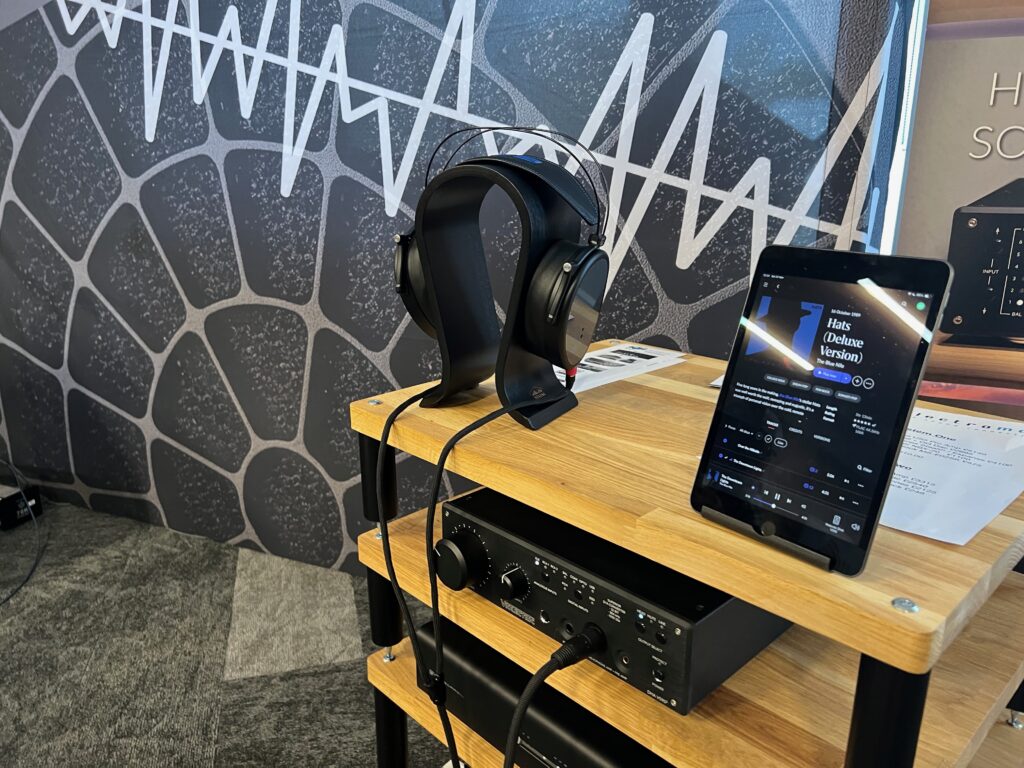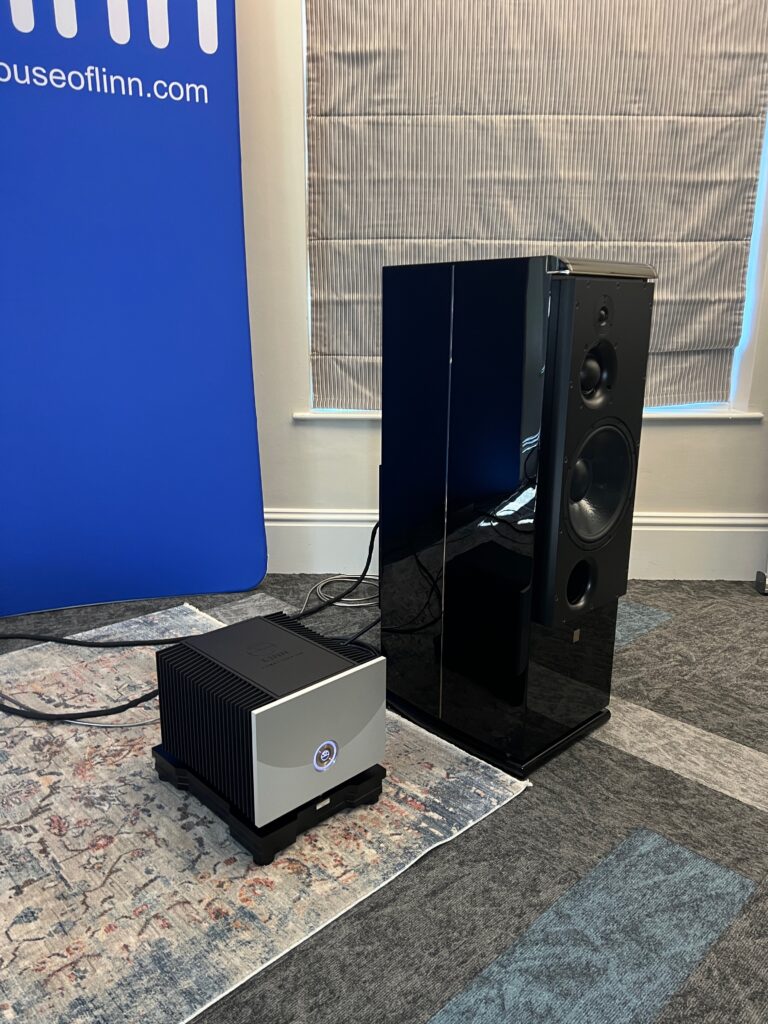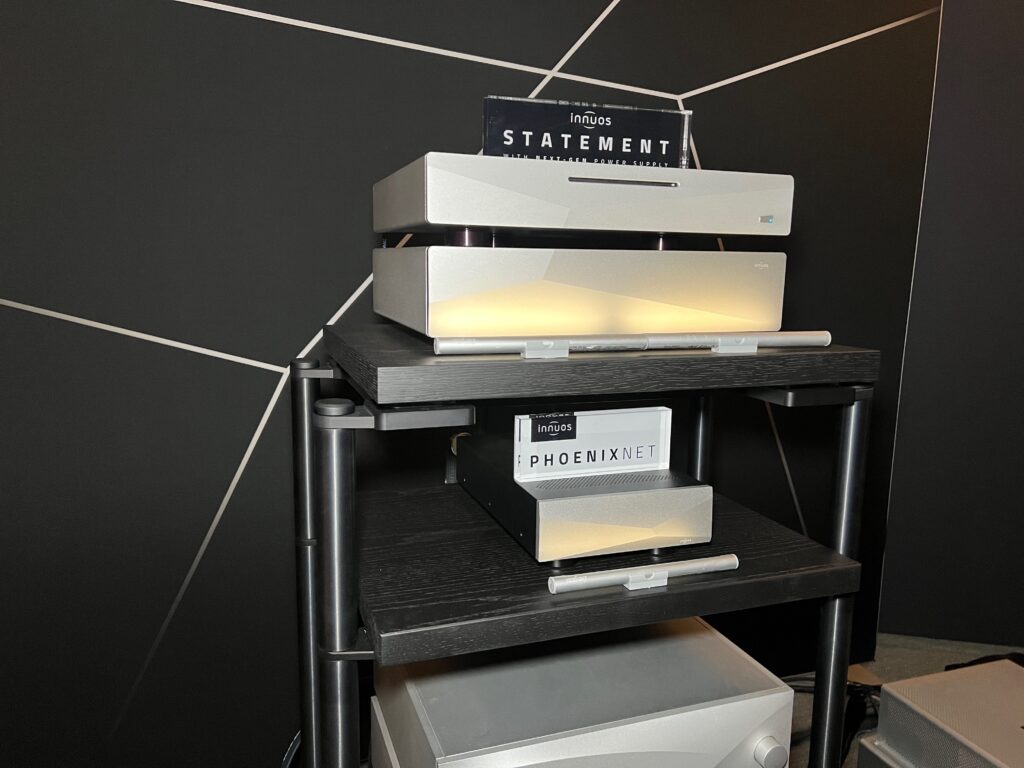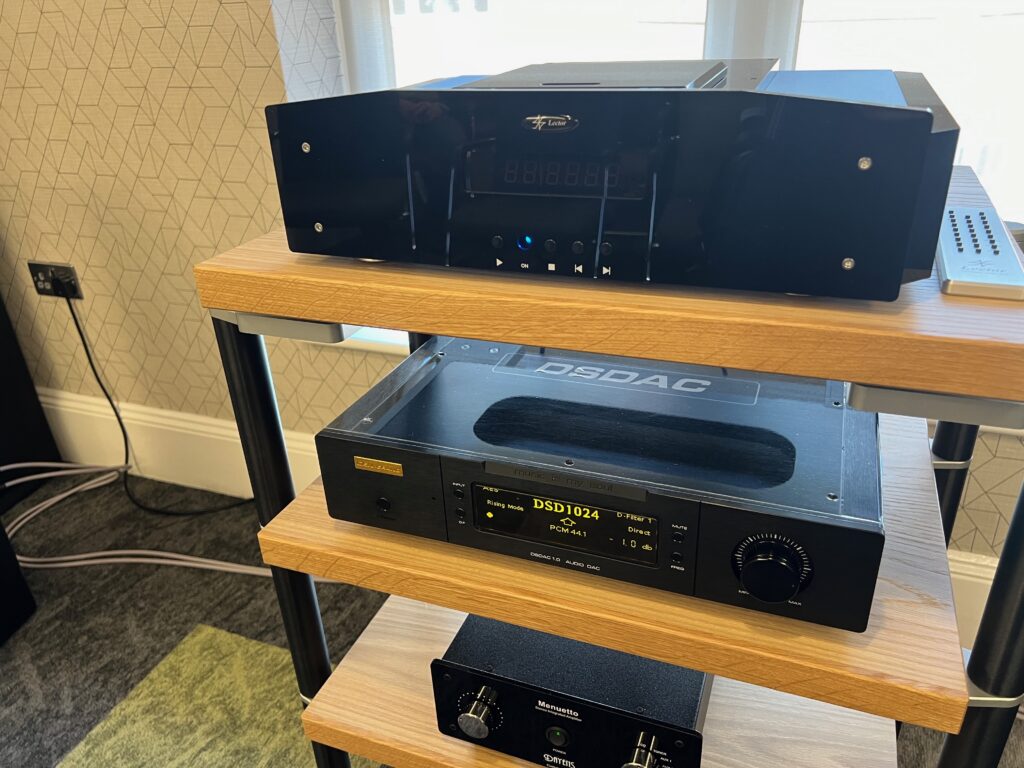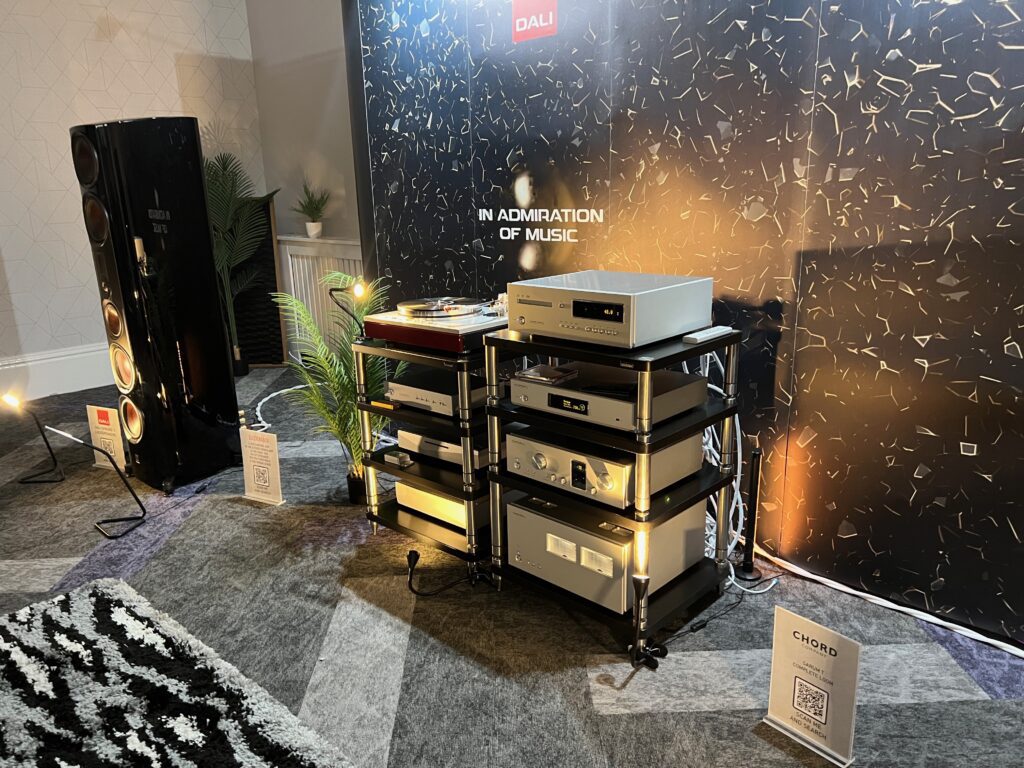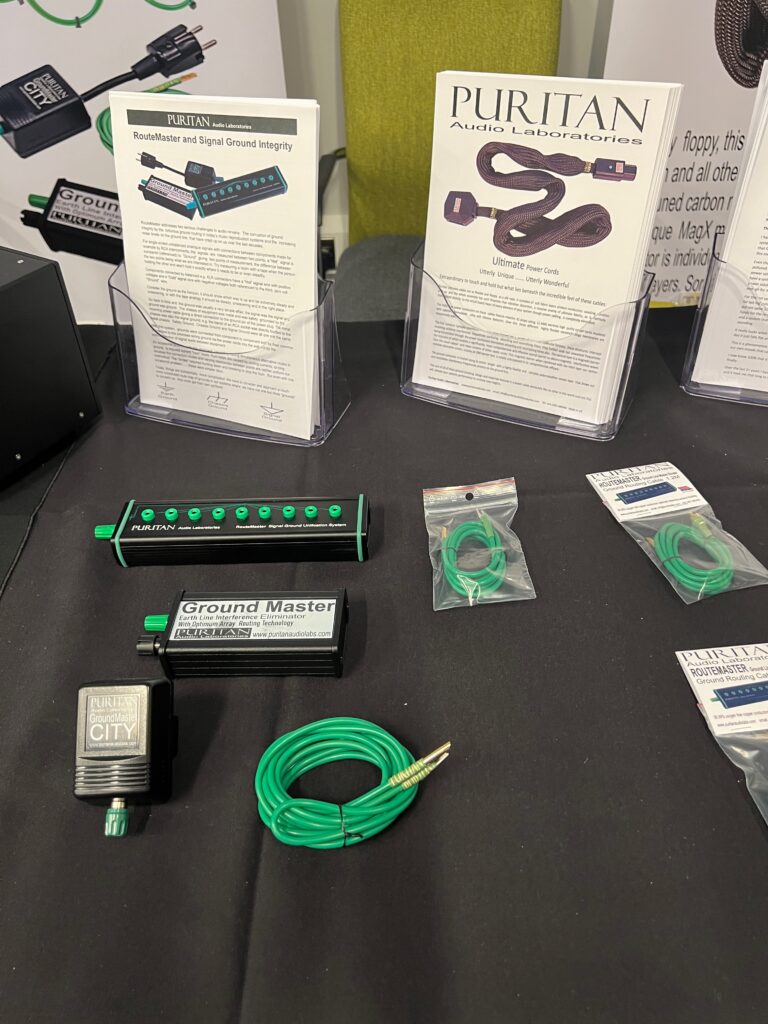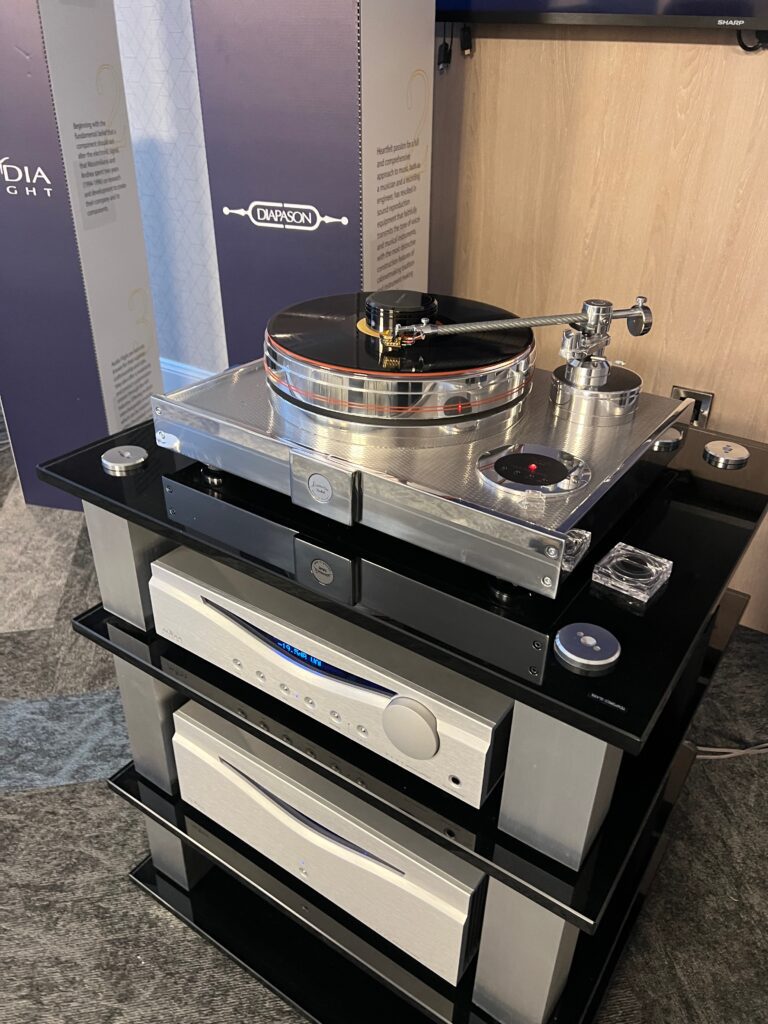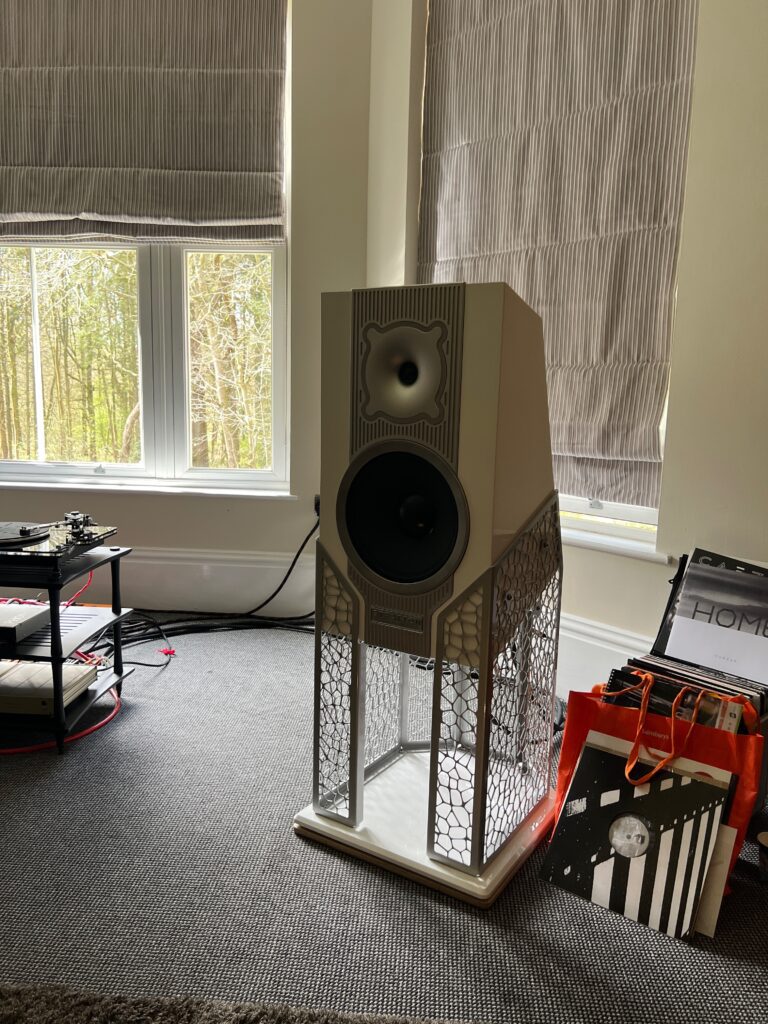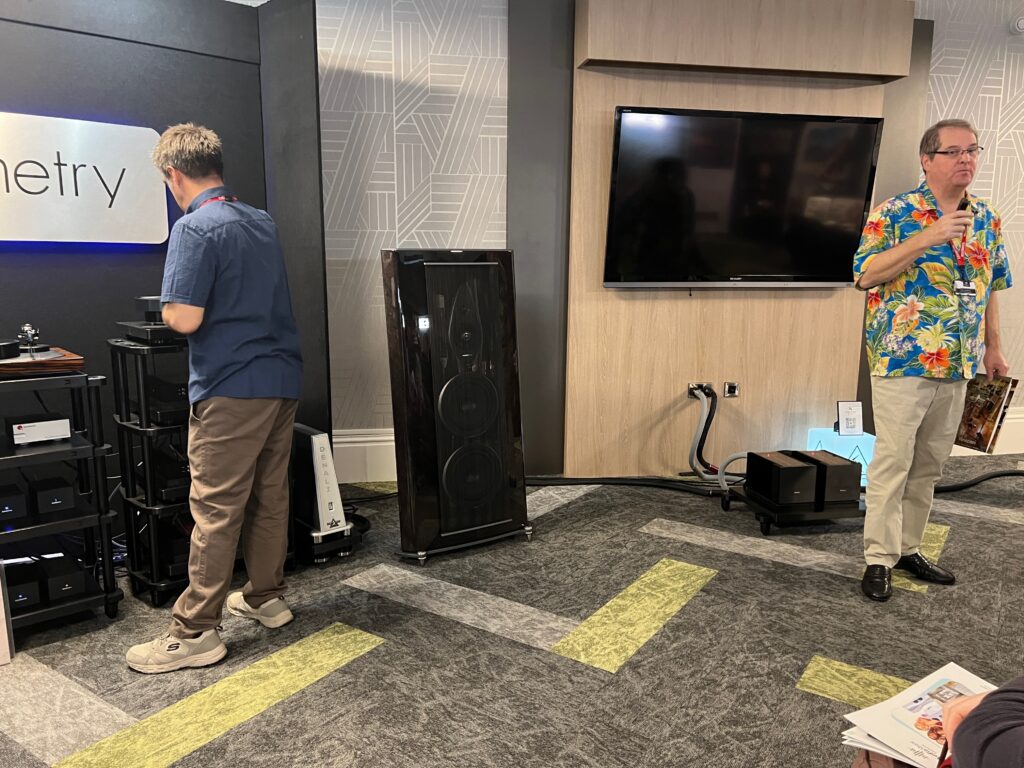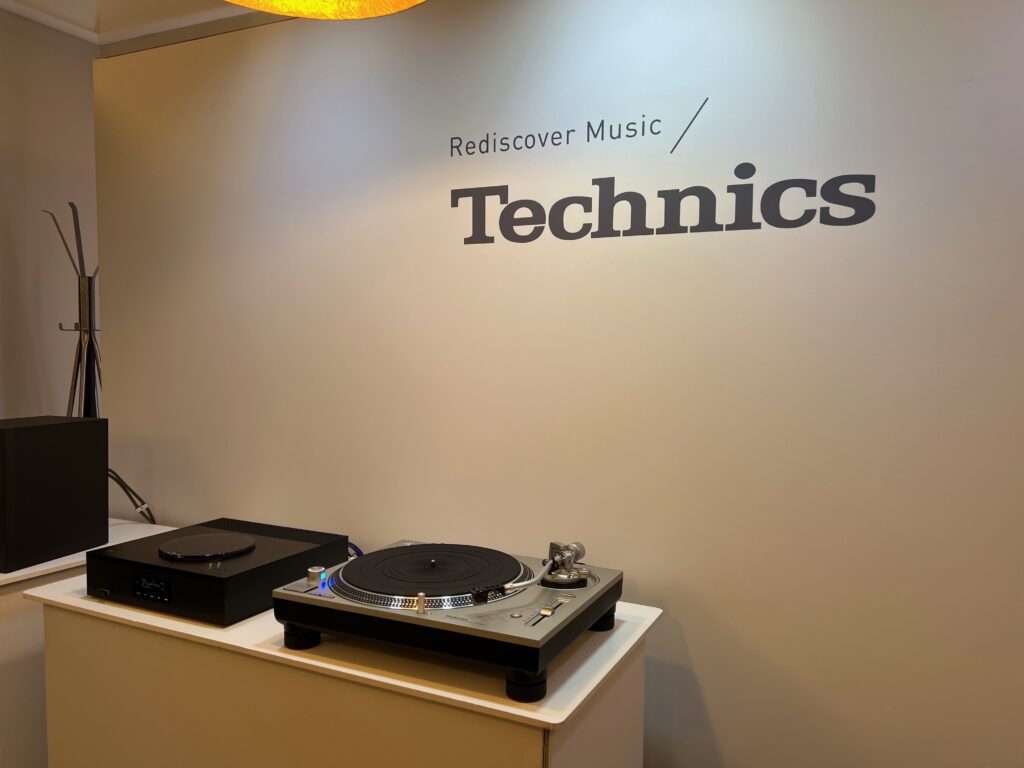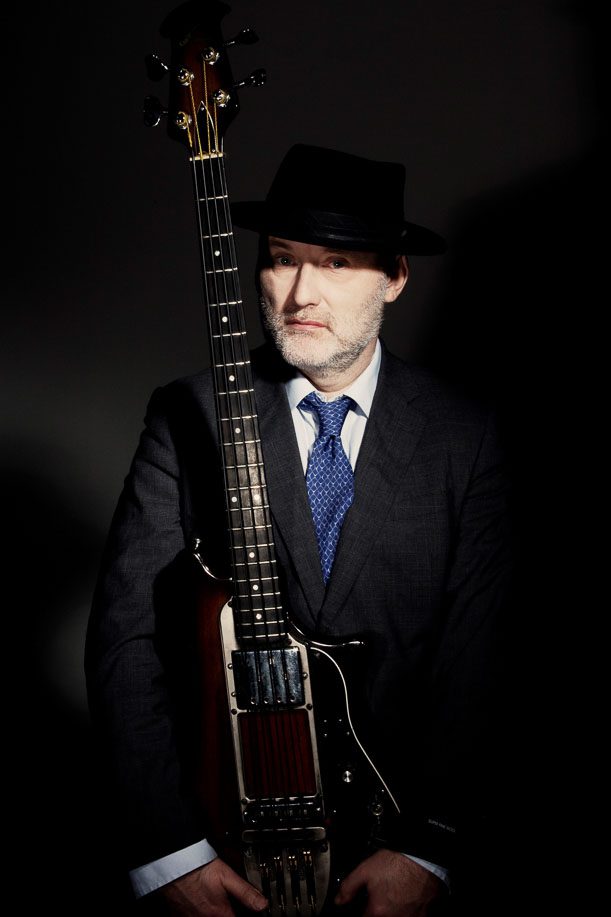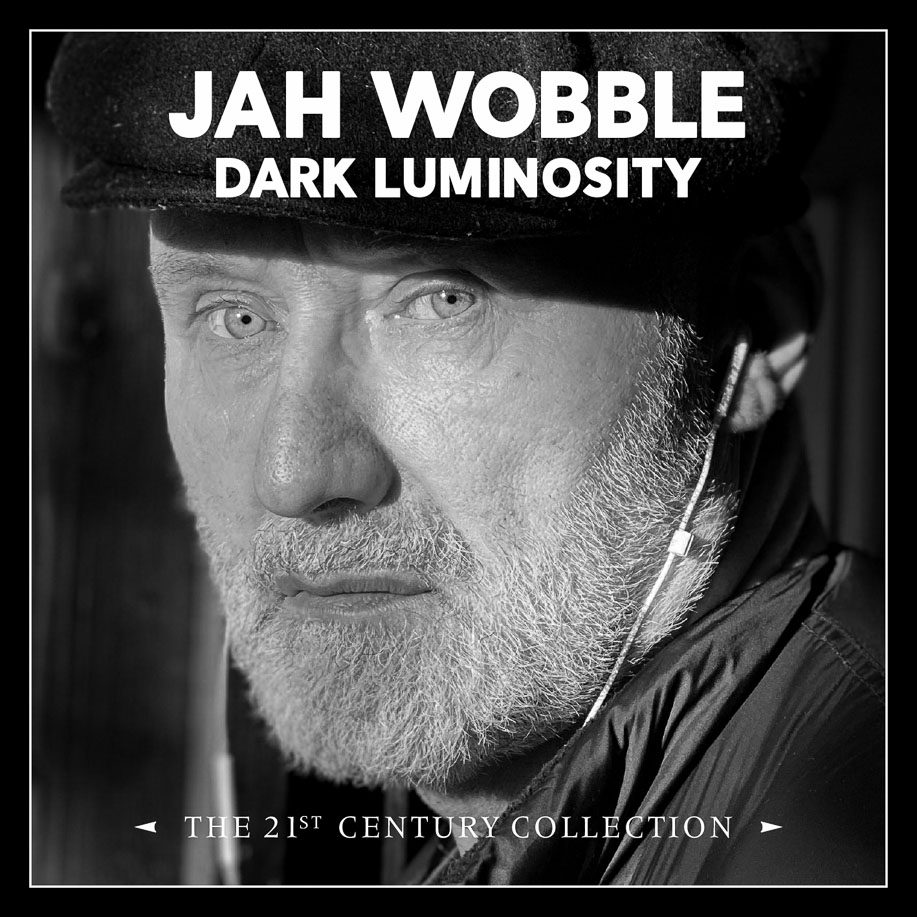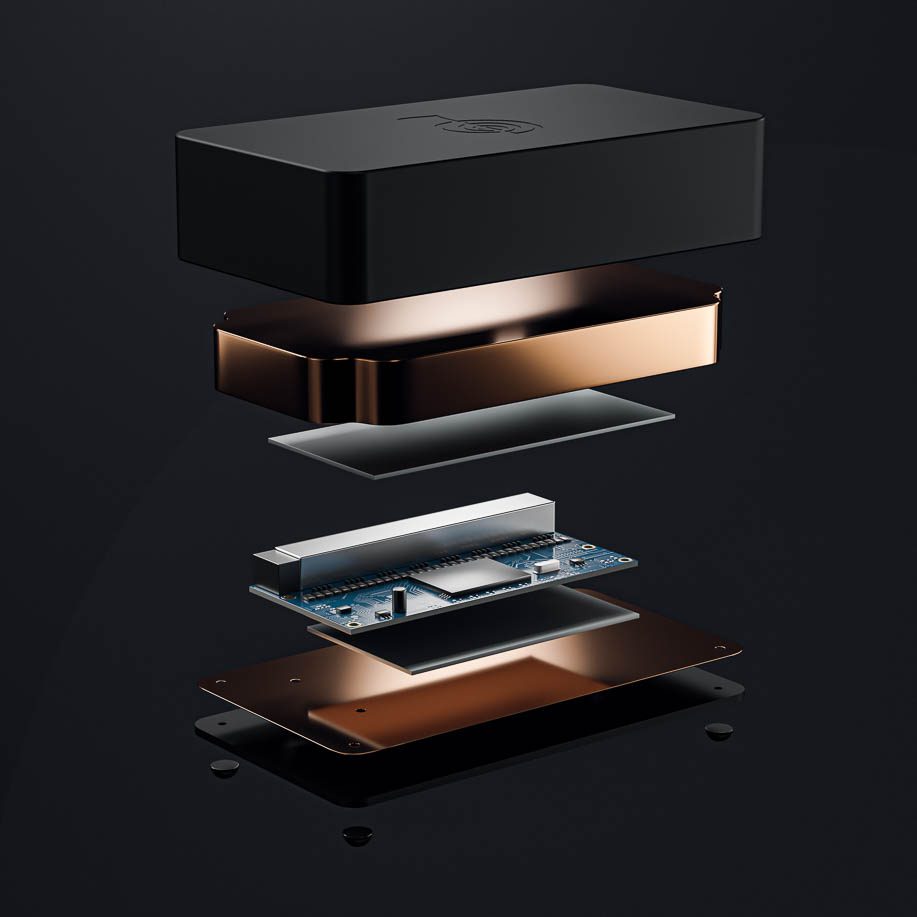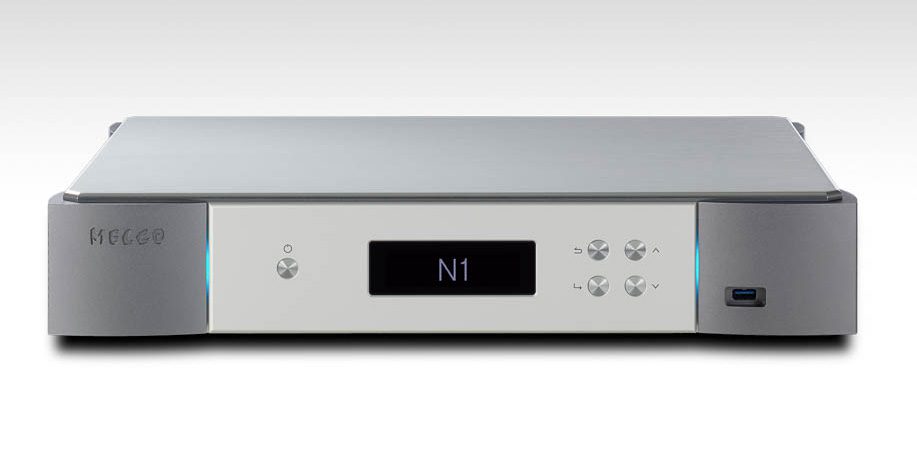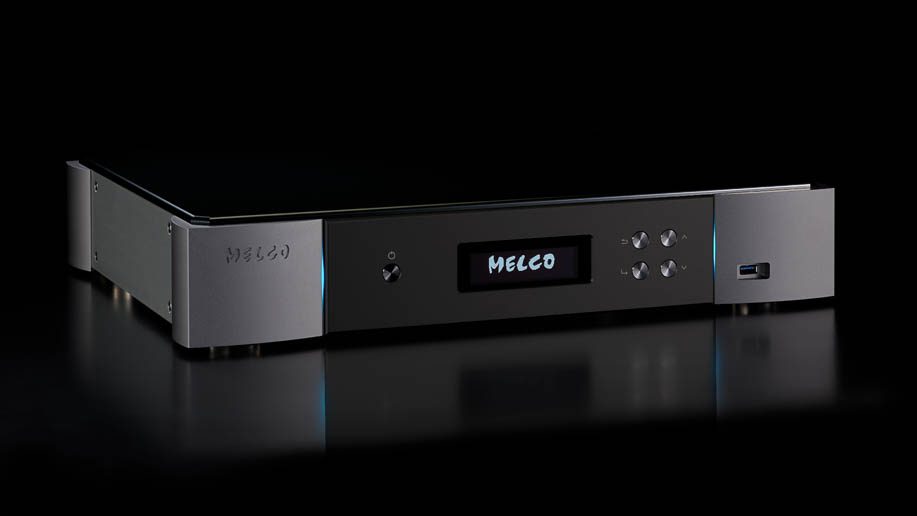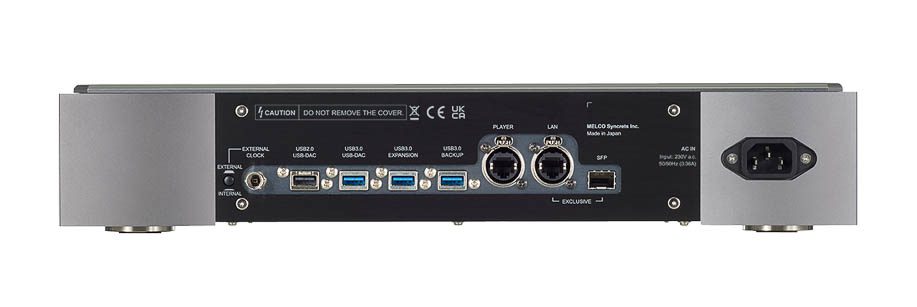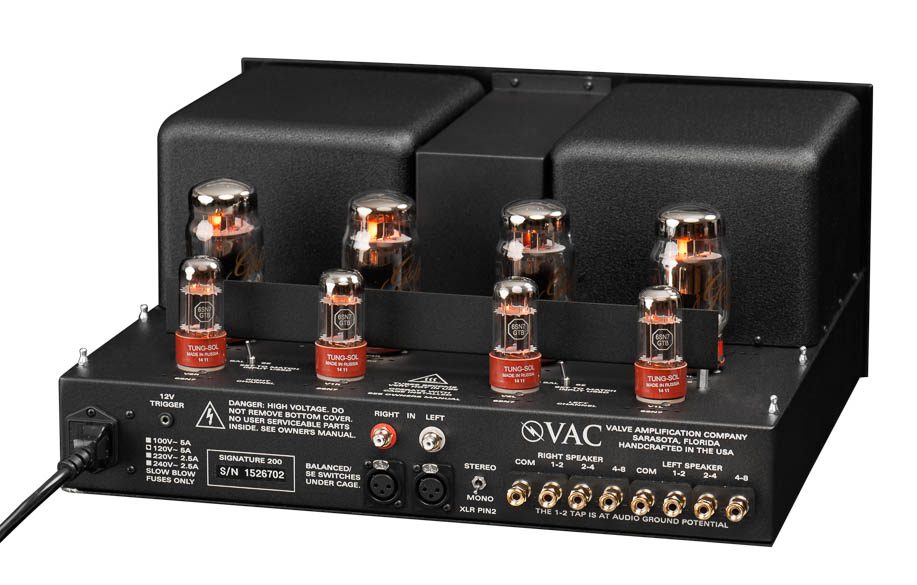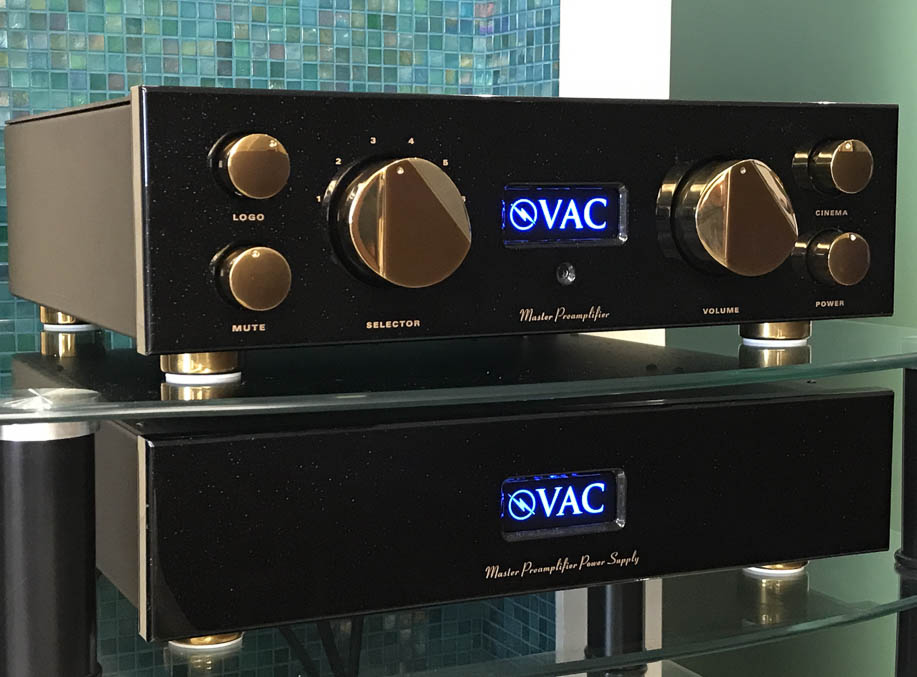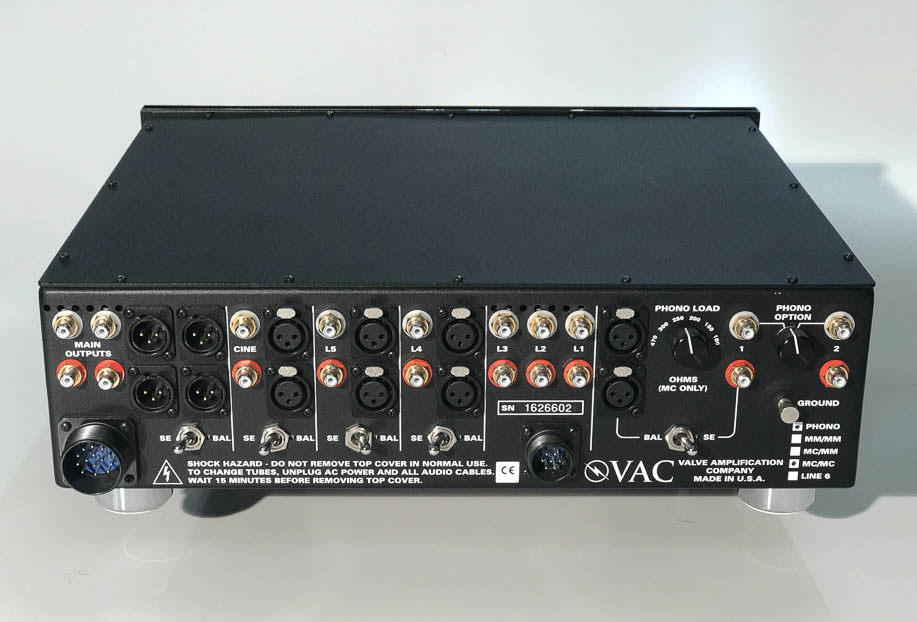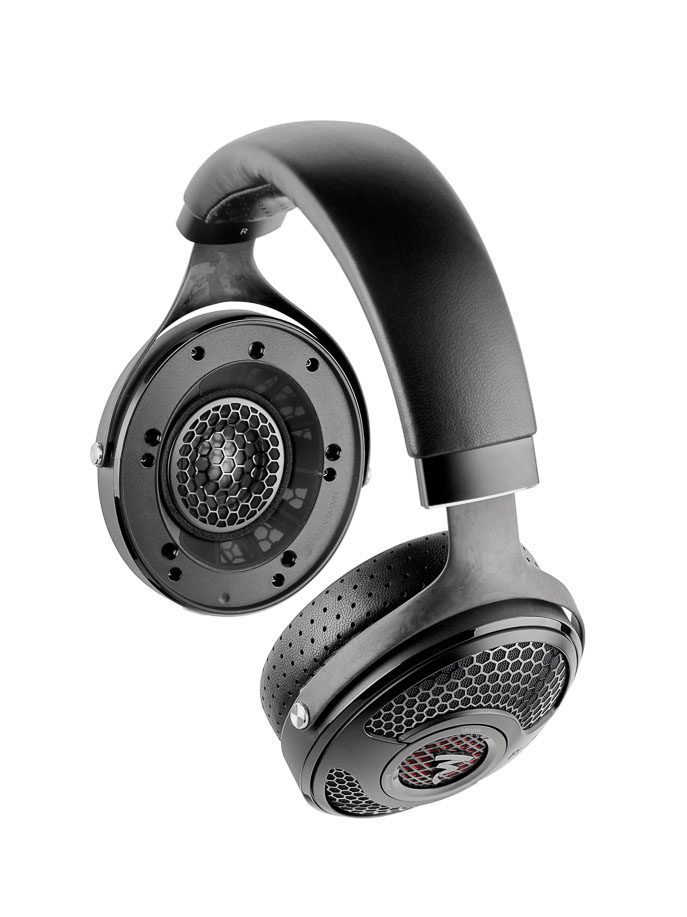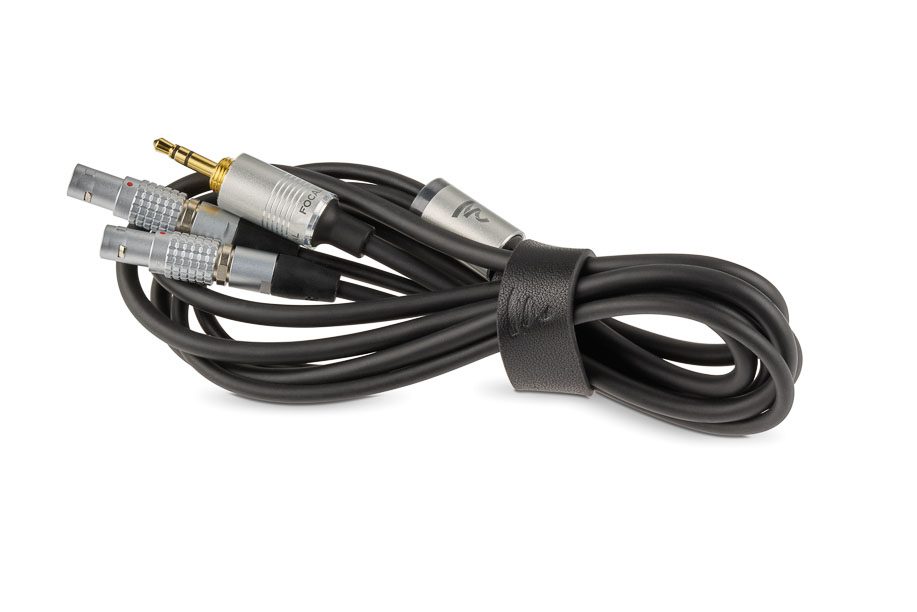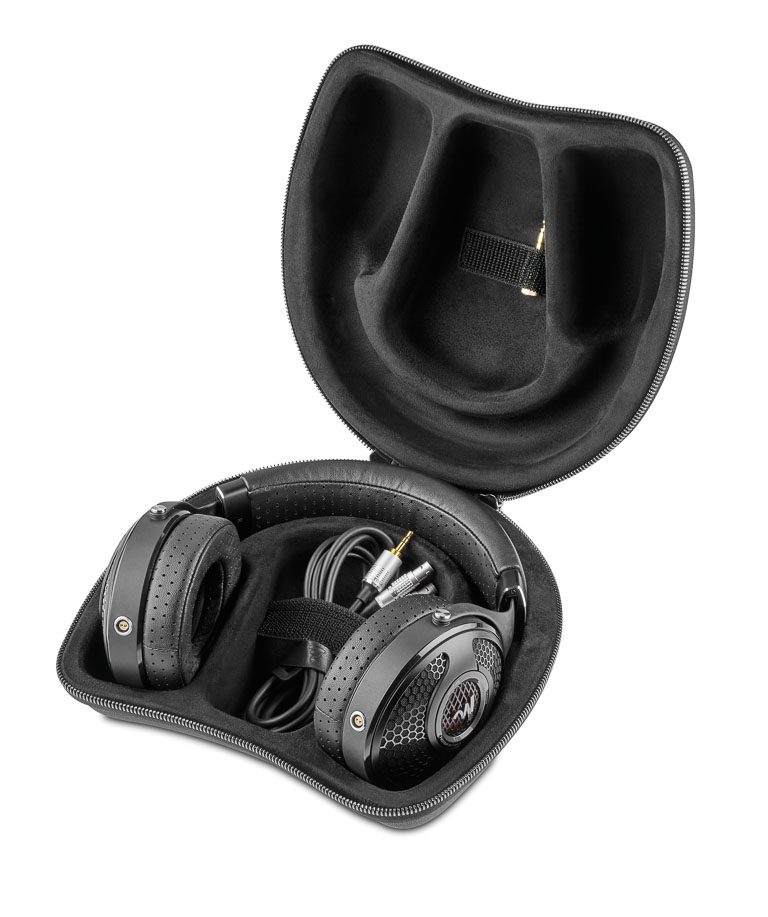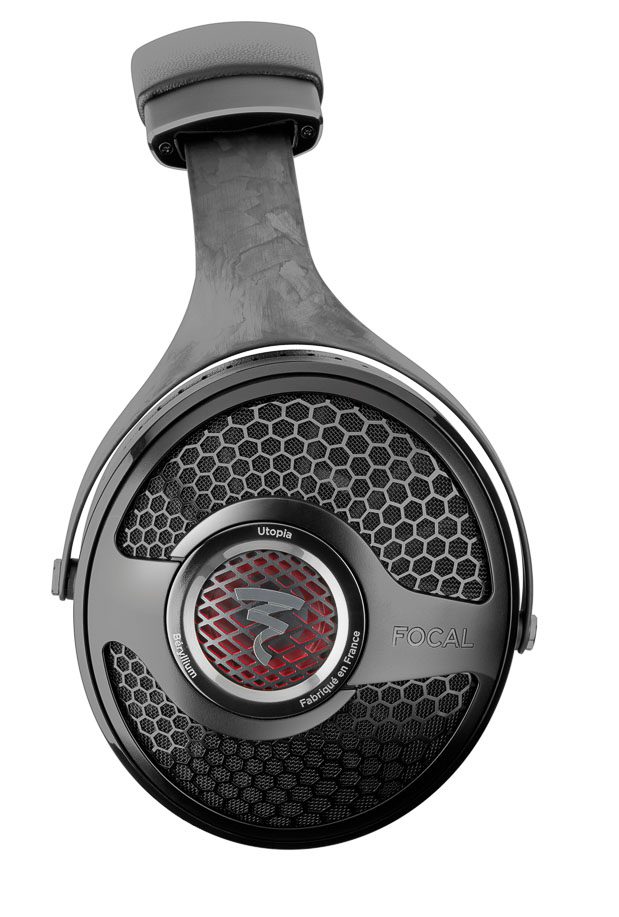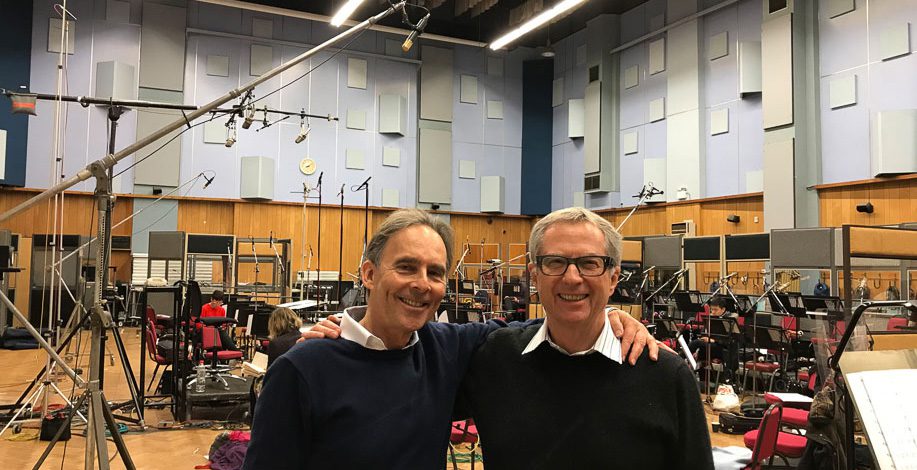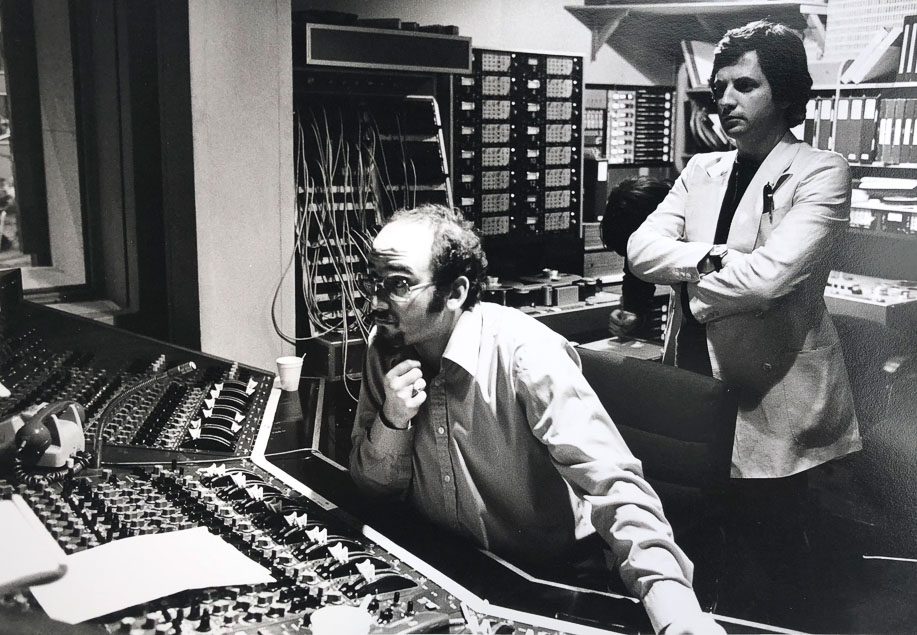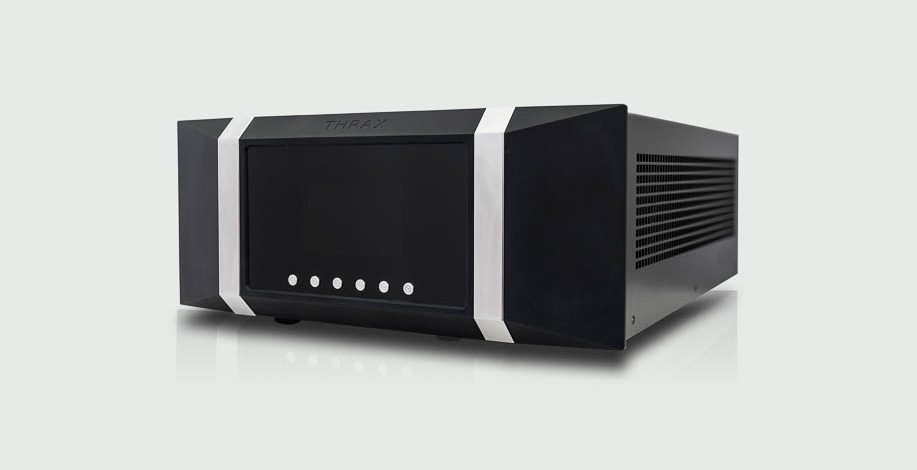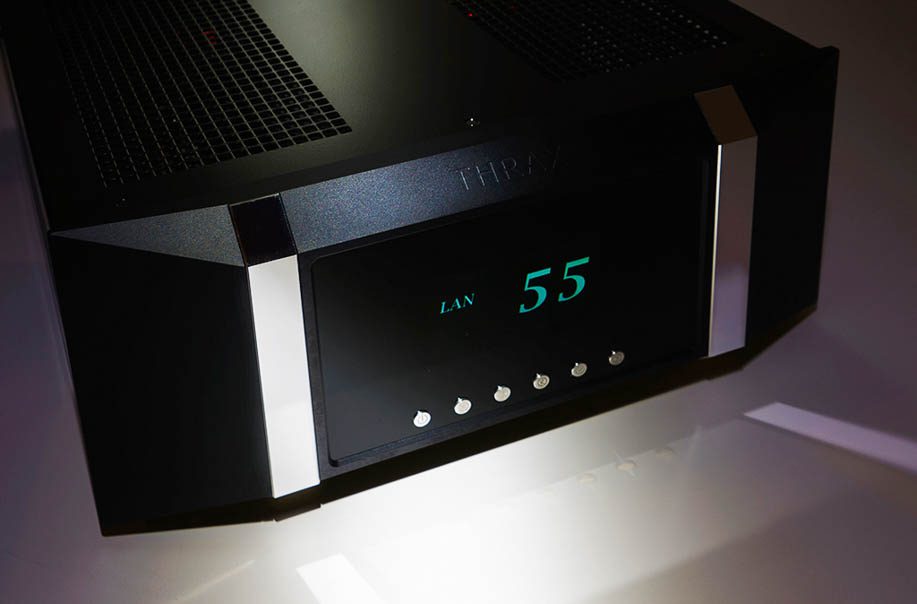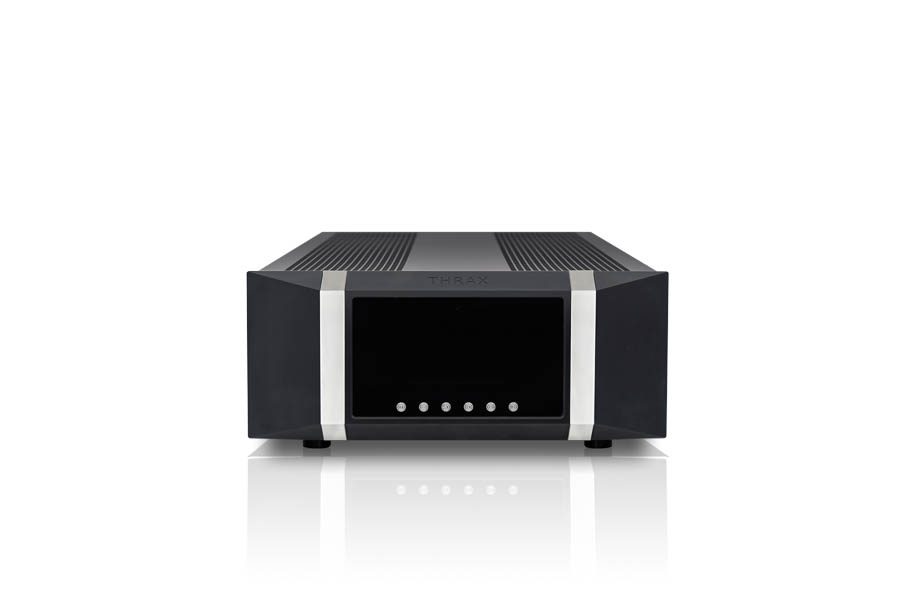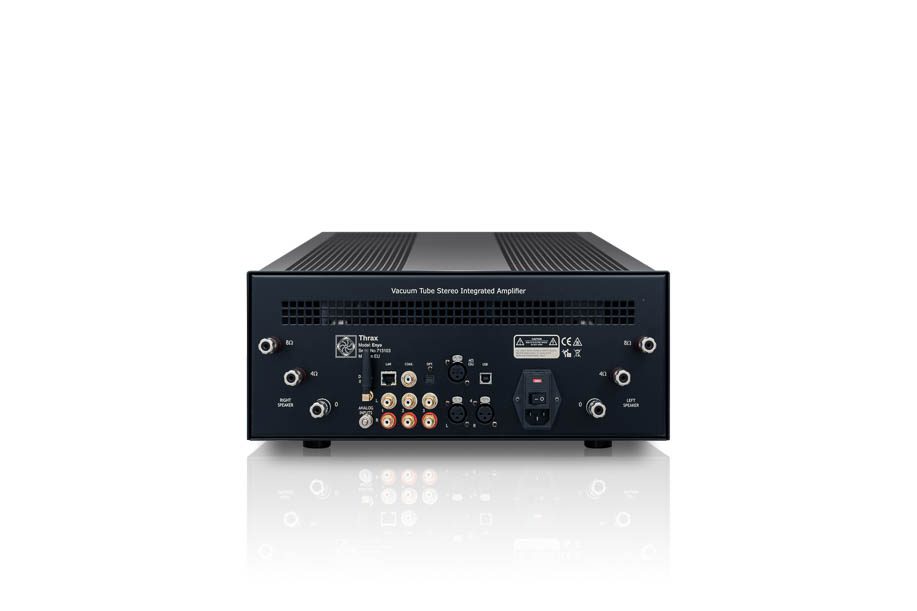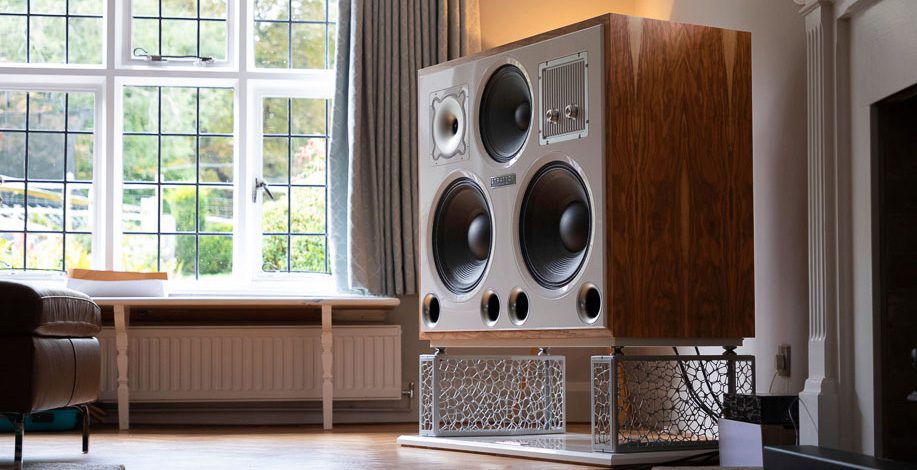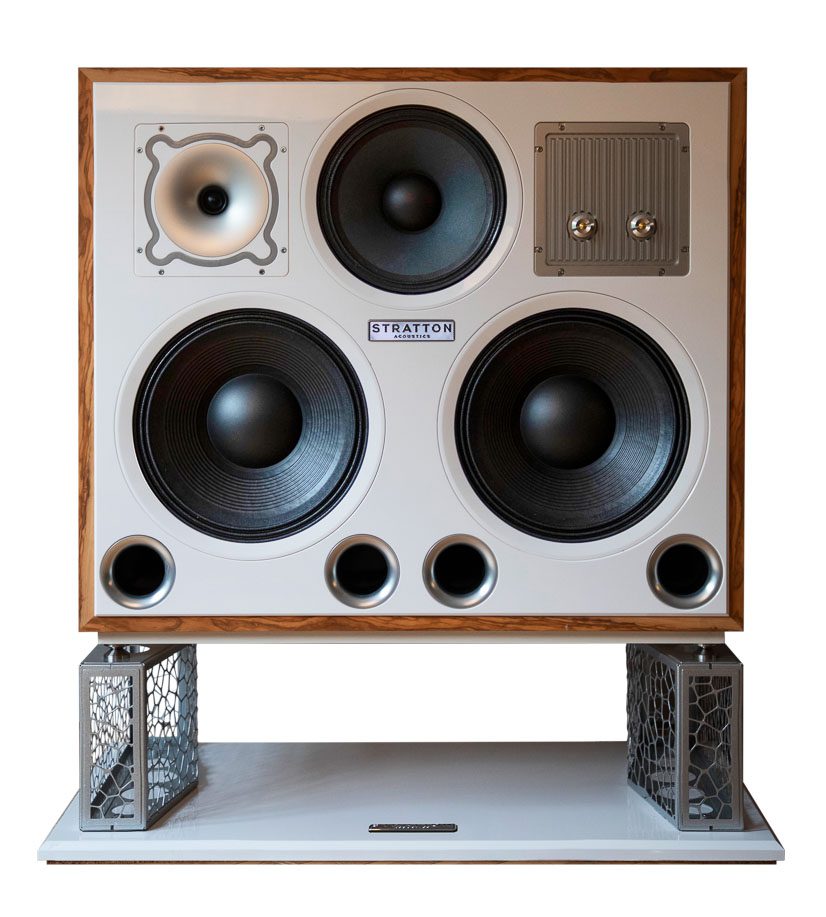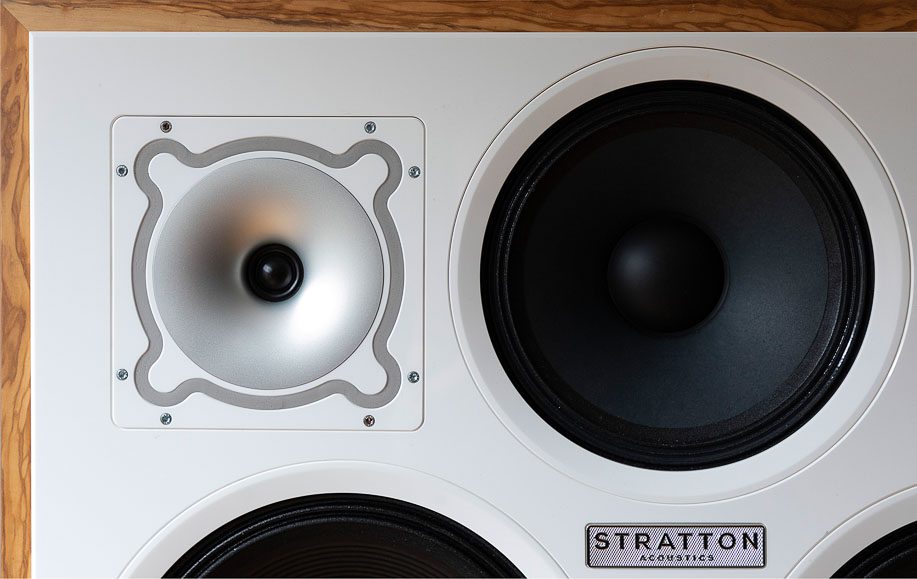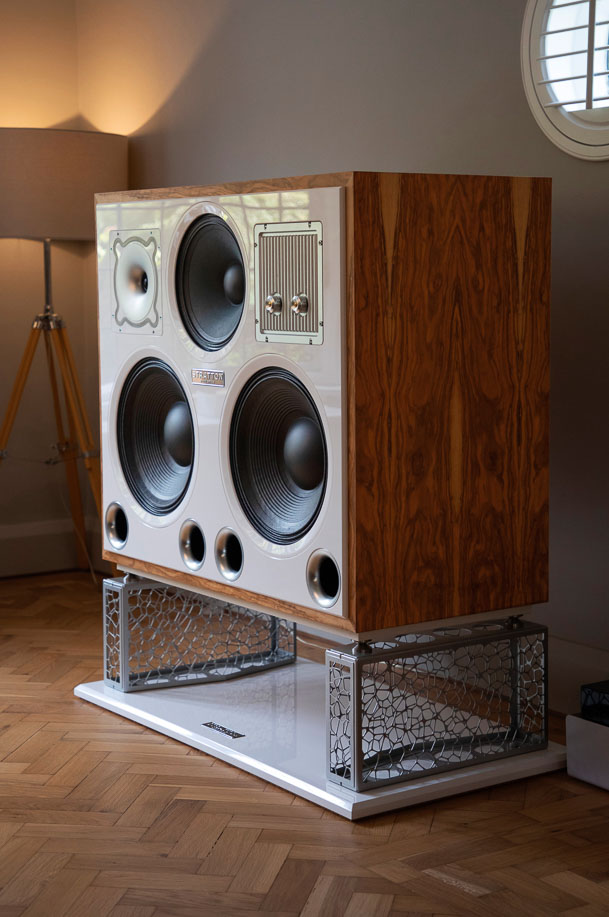Family events kept me away from AXPONA 2023, which meant this was the first time I had visited the most important audio show in the US since 2019. A lot has changed… and changed for the better. Attendance was up, the attendees were a broader demographic spread, and a buzz was lacking five years ago. Similar trends are occurring in shows in Munich, Warsaw, and Bristol.
Another significant positive trend was in new product launches. Traditionally, new products are rare at AXPONA as the Munich High-End show follows just a few weeks later. But the market has changed radically over the last five years. While the need to show new products to the widest audience still holds, the advantage that Munich once held is falling away slightly. First, the pandemic prevented Asia-Pacific distributors and buyers from travelling worldwide. Now, with several no-fly zones between Asia and Europe, adding extra hours in the air all combine to make shows in the West less attractive.
Nevertheless, most new product launches remain set for May in Munich, meaning any report on AXPONA must combine a ‘best of’ approach covering what’s new and what sounded good. However, any survey of ten floors of hotel-room demonstrations and dozens of conference rooms and exhibition spaces makes complete coverage as impossible as it would be unwieldy. And any edited highlights of a show are going to miss out somewhere. But here is the first part of our ‘best in show’:
Amphion
Playback Distribution showed the Krypton3x floorstanding loudspeakers from Amphion ($24,000/pr), coupled with the F-02 integrated amplifier ($18,000) and N-01XD-SE network streamer ($22,000) from Esoteric. Replacing the crossover, tweeter and more in the original Krypton3, this was the Krypton3x’s first major US outing, following its introduction in Munich last year. This was connected using power conditioning and cabling from Esprit, and all sat on a Quadraspire SVT rack ($550/tier)
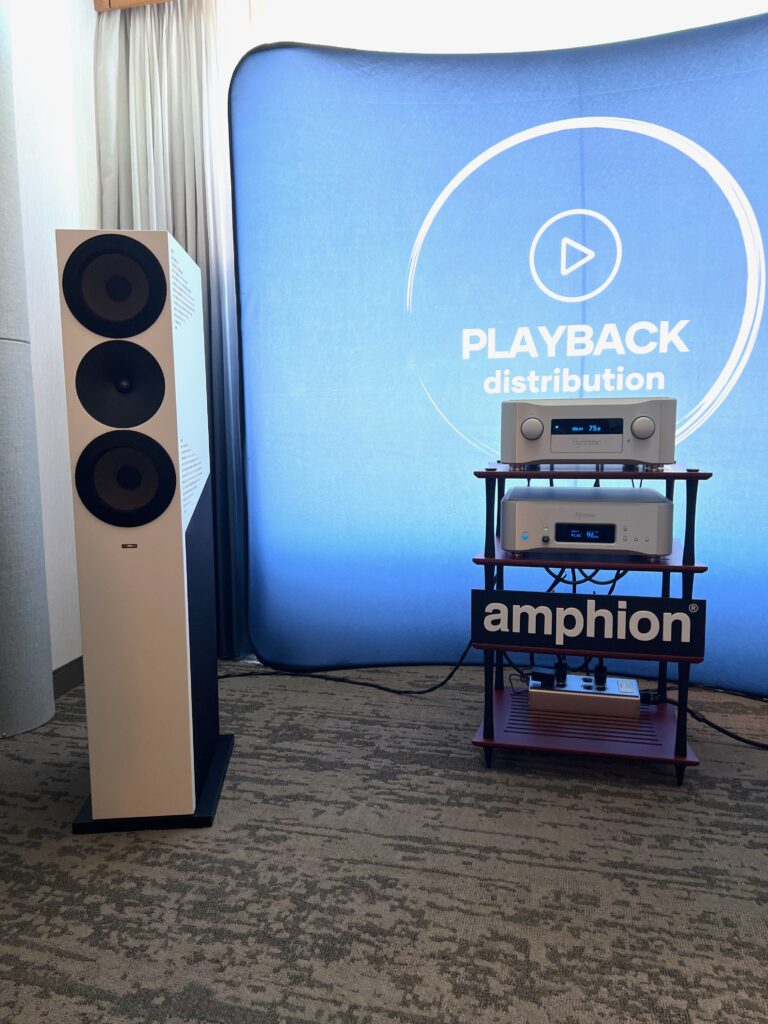
Audio Group Denmark
One of the show’s stars, the new Børresen Acoustics C1 stand-mount loudspeaker ($16,500/pair, incl. stands) from Audio Group Denmark, represents a new mid-point between the brand’s entry-level X-Series and more up-market M-Series. Floorstanders will likely join the C1 to bring the C-Series more in line with the other two designs. Pulling in trickle-down and trickle-up technology, and adding its innovations along the way, the diminutive two-way delivered surprising bass and speed. It was driven by the top of the new, more attainable Axxess integrated amps (the $11,500 Forté 3), a prototype of the Axxess power distributor, an unmarked Ansuz (Axxess?) PowerSwitch network switch, and Axxess cables.
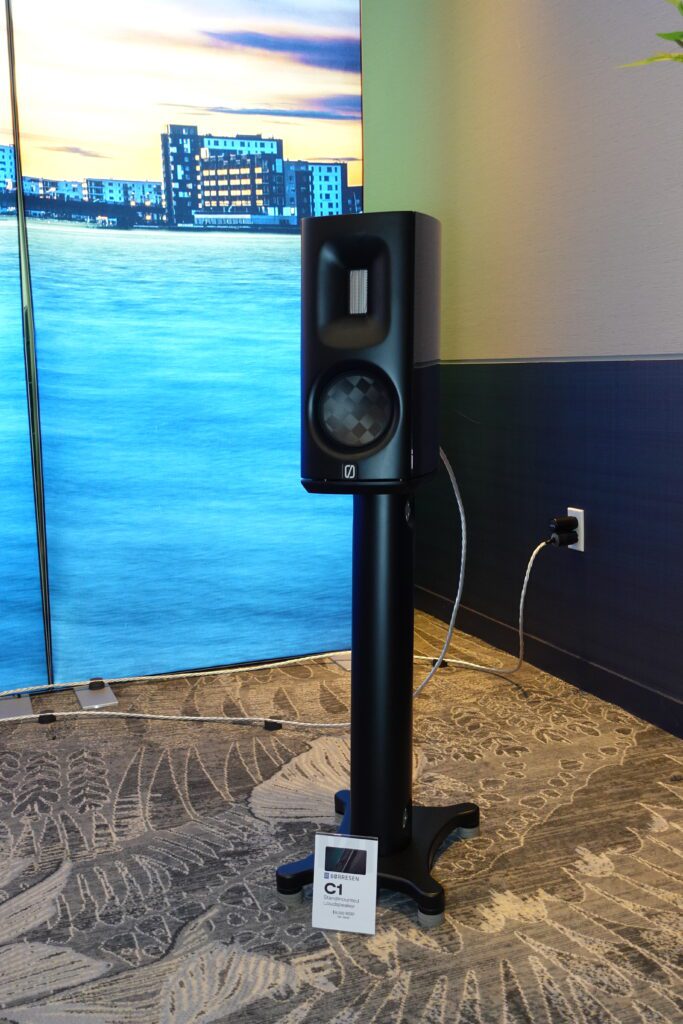
Elsewhere, Illinois-based dealer Next Level Hi-Fi and Audio Group Denmark showcased the Forté 2 integrated amplifier ($5,500) fed by an Ansuz PowerSwitch A3 network switch ($4,000) and a Mainz8 A3 power distributor ($3,700) into Børresen X3 floorstanding loudspeakers ($11,000/pair).

Crystal Cable
To celebrate its 20th Anniversary, Crystal Cable announced Infinity, its limited-edition power cord. It uses nine coaxial conductors (three each for live, neutral, and earth) woven into a symmetrical matrix for geometric consistency and to eliminate any potential external interference. Just 200 sets of this luxury power cord will be made, using a braid of the company’s new infinite silver and silver-gold alloy strands and solid cores drawn from extremely pure silver.
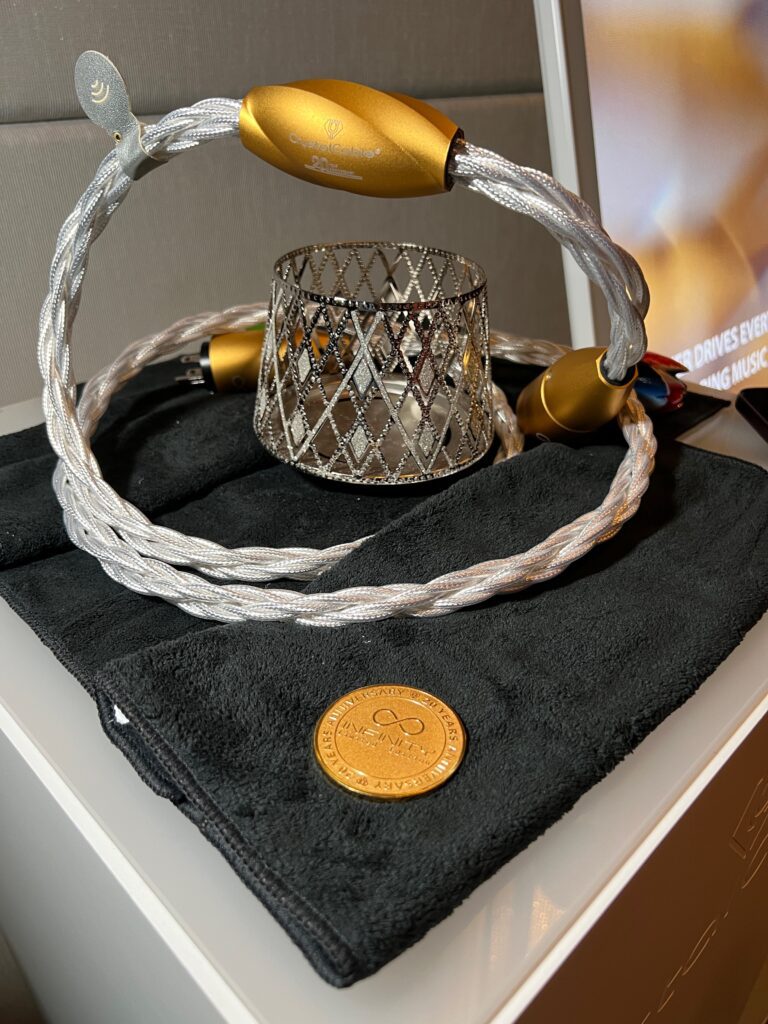
In the same room was a sublime-sounding room built by the Luxury Audio Group. This was formerly known as Elite Marketing Dynamics, and concentrates on premium brands for premier-class customers. The system comprised a Vitus Audio SD-025 Mk II DAC ($30,000, fed by an Innuos Statement Next Gen server), SL-1203 Mk I preamplifier ($40,000), SM-103 Mk II mono amplifiers ($75,000/pair), Estelon Forza loudspeakers ($169,000/pair) in a sumptuous (yet hard to photograph) Violet Night finish, NEO HighEnd Quatron racks and feet (c.$50,000), Ekustik Parametric Wall (from $5,000) and Woody Wavy bass traps (from $650). The result was one of the best-looking and best-sounding rooms in the show. The larger rooms at the show are generally forward and glassy sounding. While this system didn’t overcompensate for that, it also made it more effortless than many, with good bass depth and control and a midrange that was as clear as well as projecting into the room.
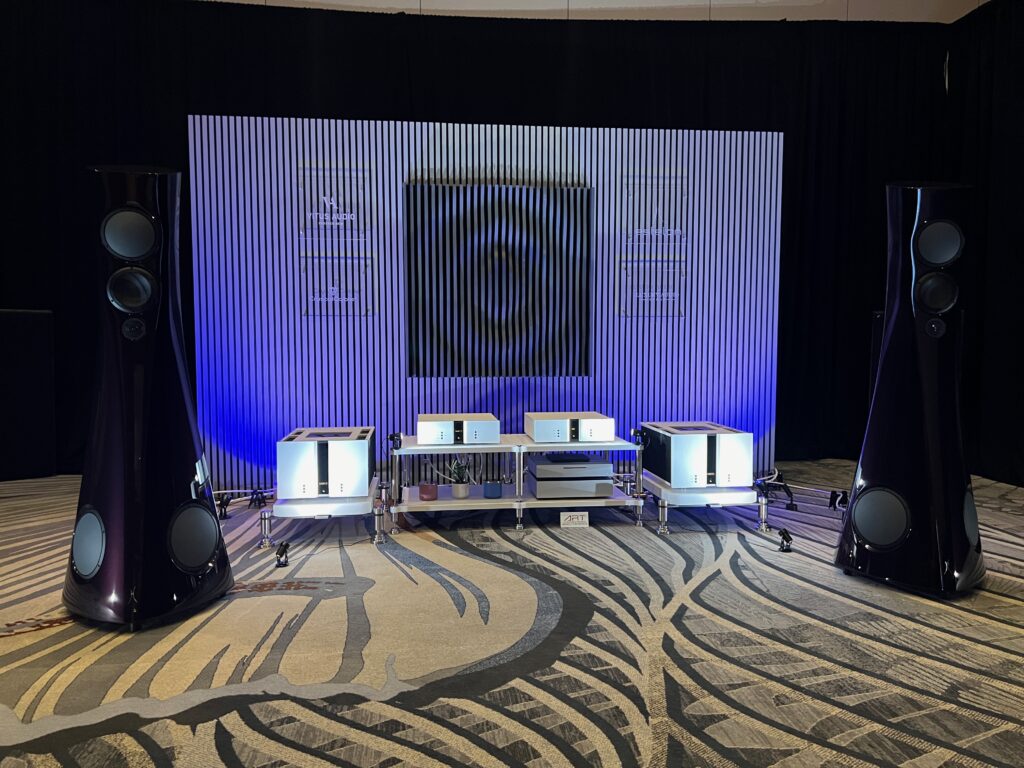
Gryphon Audio Designs
Strictly speaking, Gryphon Audio Designs launched the PowerZone 3.10 power optimiser ($14,000) at AXPONA 2024, but this was also the first US public outing for the Diablo 333 integrated amplifier (£24,900) and the EOS5 floorstanding loudspeakers ($52,800 per pair). Add to that the outstanding Ethos CD player ($39,800), Rosso cables, and StandArt rack… and the result is an all-Gryphon system that sings sweetly. The indefatigable Rune Skov from Gryphon was on hand to demonstrate the system’s sound with and without the new PowerZone 3.10, and it was one of the most obvious A-B demonstrations at the show.
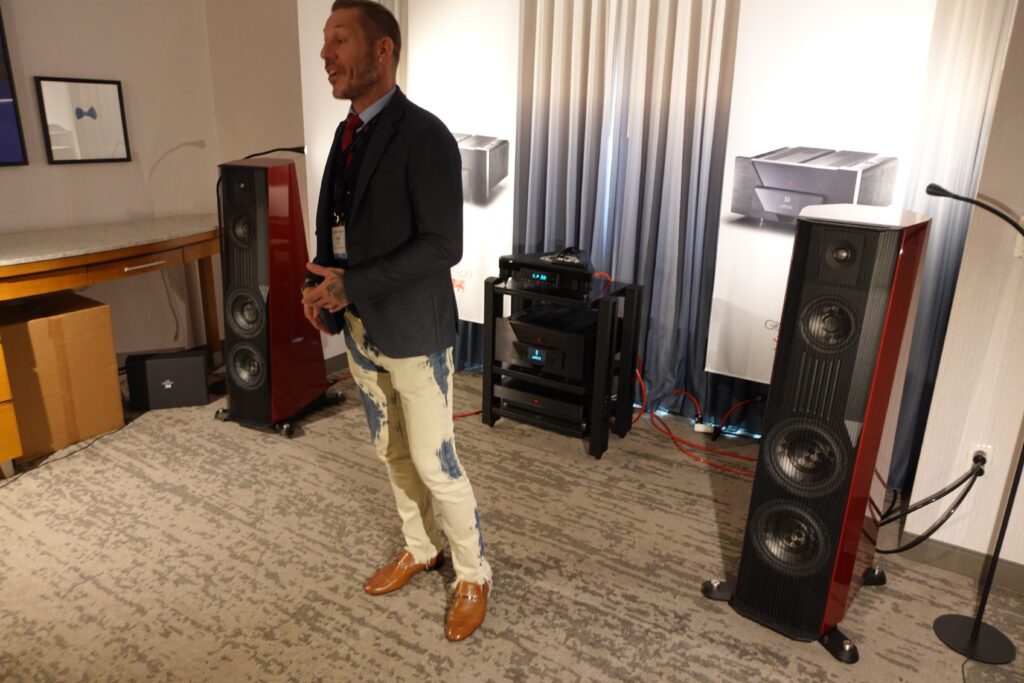
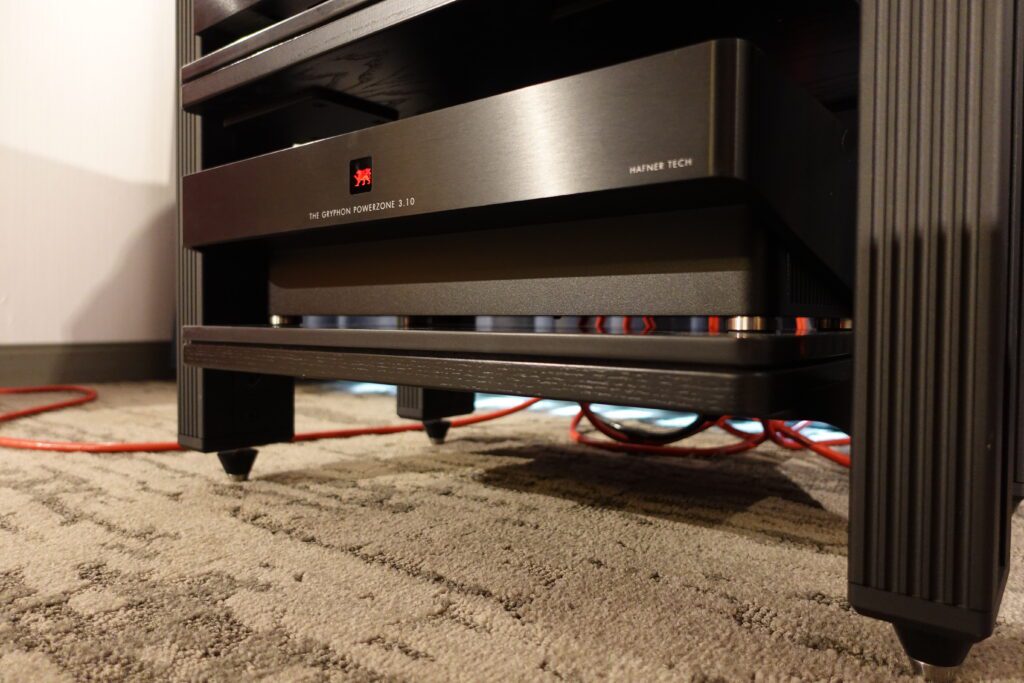
Innuos
Innuos was showing its excellent PULSAR network music player ($7,999) with a prototype I2S connection. This HDMI connection included an adjustment to make it hook up to any variation on the theme of I2S. The direct digital connection wired the PUSLAR – via an Innuos PHOENIXnet network switch ($4,349) and Transparent Cable HDMI – to a Lampizator Horizon DAC ($49,000), Soulution Audio’s 325 preamplifier ($28,225) and 511 stereo power amplifier ($41,975) into Rockport Technologies Atria II loudspeakers ($38,000/pair). The system sat on a TAOC CSR series rack ($1,999 per tier), with Transparent Cables throughout and a Stromtank SEQ-S power bank ($4,975).
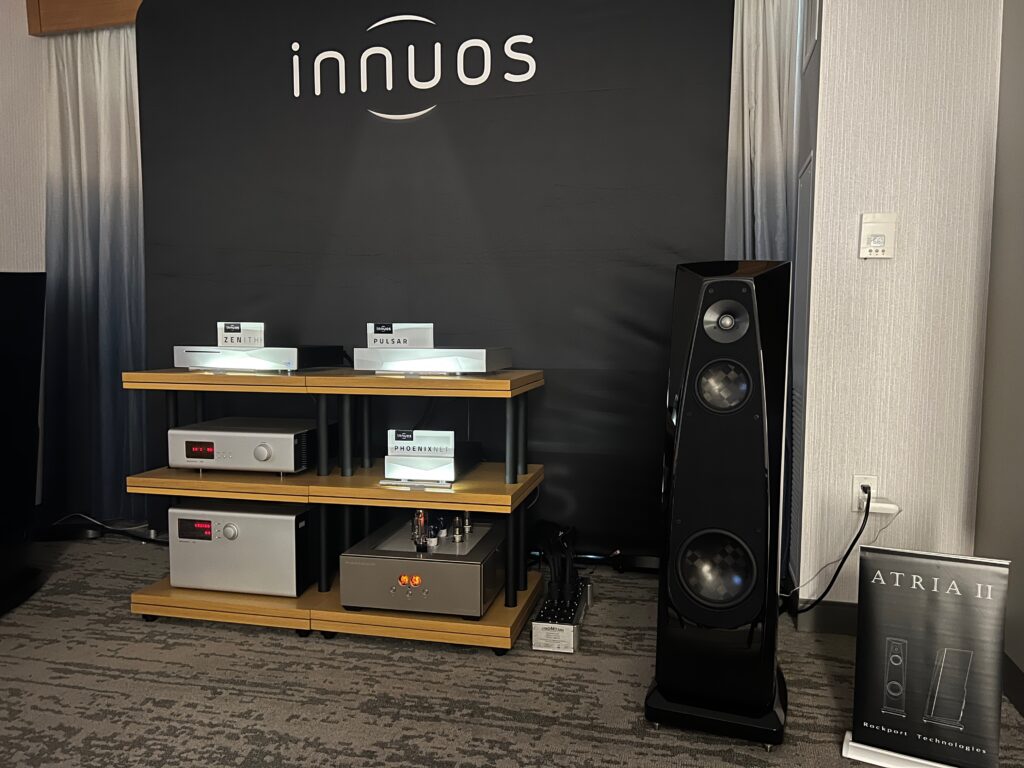
Krell
Krell Industries showed its latest power amplifiers, the mighty KMA-i800 mono power amplifiers ($73,000 per pair). Arnold Martinez, Krell’s newly minted president, will take over the brand from the retiring Rondi D’Agostino. He had been so busy in the handover that he hadn’t had time to create a ‘cheat sheet’ of equipment in the room, but it comprised of a Bergmann Audio turntable feeding the Krell K-300p phono stage, and Synergistic Research Voodoo streamer feeding a Krell Vanguard Universal DAC. These fed into a Krell Illusion II preamplifier, all sitting on an original Stillpoints ESS rack. The electronics fed a pair of Magico A5 loudspeakers, and everything was connected to a host of Synergistic Research cables, a power conditioner and room tuning systems. The result sounded excellent.
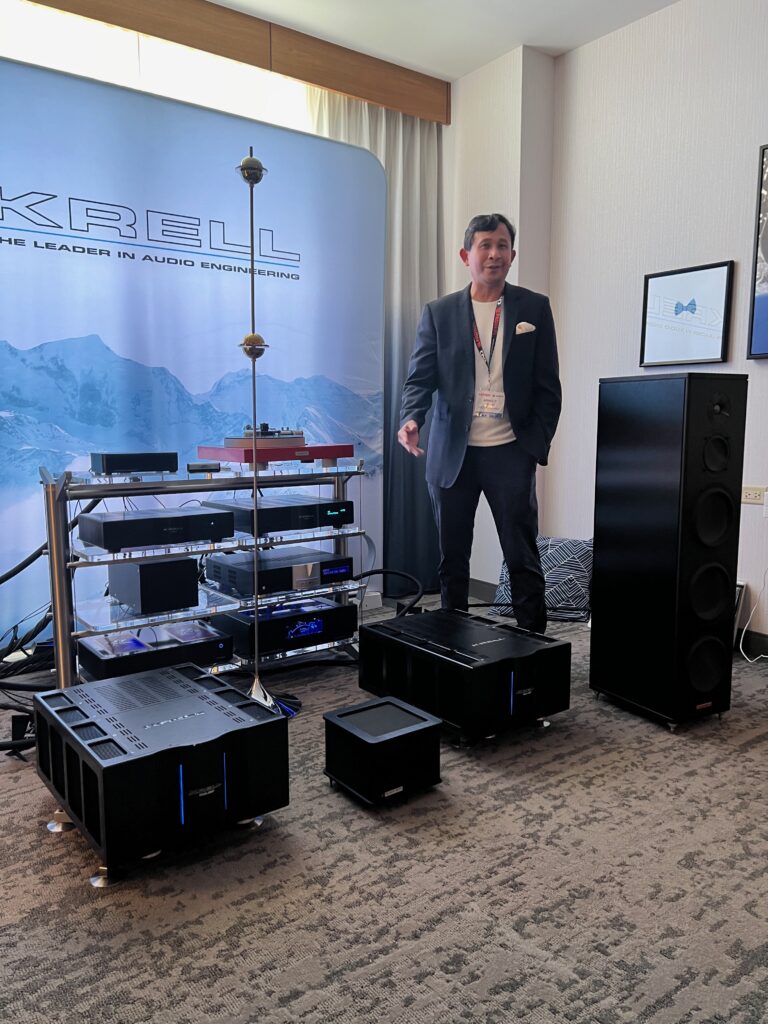
Magico
Less of a launch and more of a teaser to what’s coming in Munich, Magico brought a single example of its new S5 floorstander ($74,500/pair) because Magico’s existing room was not large enough to cope with the full-range performance of this revised design. So, you’ll have to wait another few weeks to truly hear what a significantly larger cabinet and revised drivers can do.
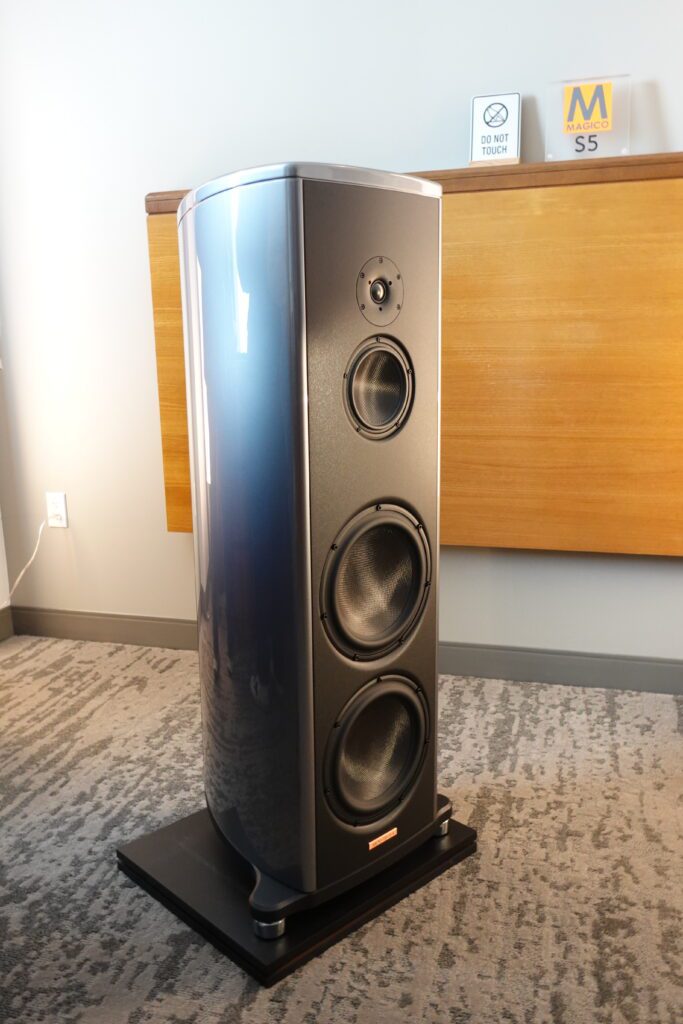
In the next room, Magico was showing what its A5 ($26,000) floorstander and M-Rack ($34,500) can do when partnered with an Antipodes Oladra server ($30,000), dCS Rossini APEX Player ($32,800) and Clock ($10,850), a Pilium Audio Leonidas dual mono integrated amplifier ($39,000). I heard so much jazz at the show that I still break out in hives at the sound of plucked upright bass, but this room sounded worth the itching!
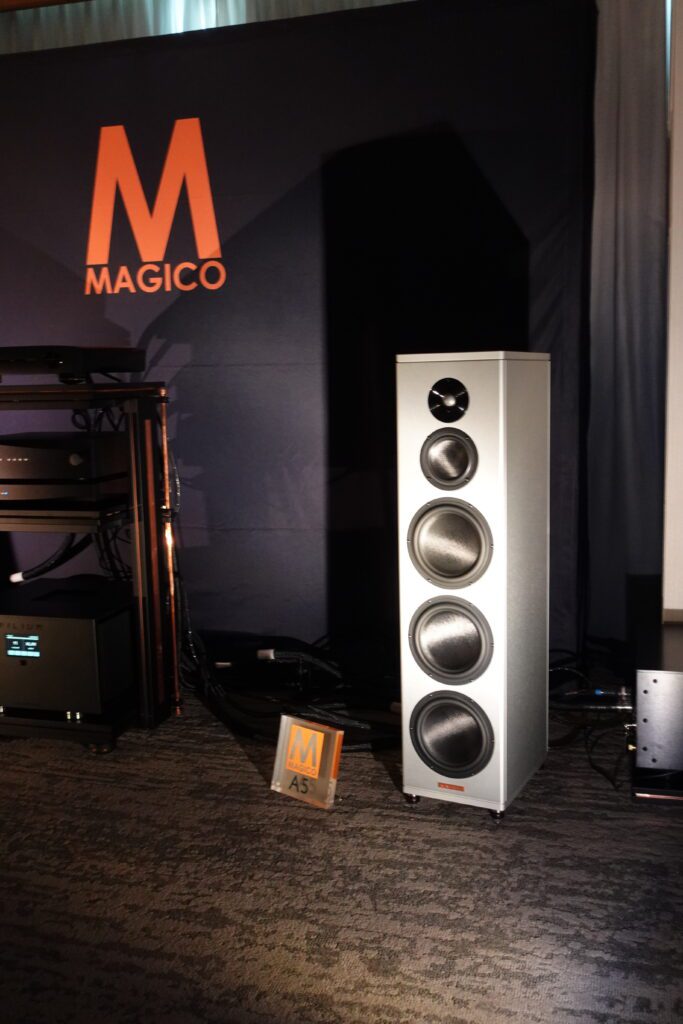
MoFi
Andrew Jones – now of MoFi Electronics – is one of a select few designers who doesn’t know how to make a wrong product. His latest design is the SourcePoint 888 floorstander ($4,999/pair). As the name suggests, this adds two eight-inch bass drivers to the coaxial eight-inch midrange and 1.25in tweeter design found in the stand-mount SourcePoint 8. Andrew has designed the short-throw bass units to have long-gapped, dual-opposing Neodymium magnets, sitting in a cleverly multi-chambered enclosure. Both crossover points and slopes have been carefully engineered, and the result – played through a HiFiRose RS150B streamer ($4,995) and RA180 integrated amplifier ($6,995).

Morel
One of the true joys of the show is Morel Hi-Fi‘s new Avyra 633 floorstanding loudspeaker, which is fun to sit in front of, with good and surprisingly deep bass. Driven by a Hegel H590 integrated amplifier and Nordost’s Tyr 2 cables, the Avrya 633 never embarrassed itself. At $2,000 for a pair, the most common statements uttered were “Surely you mean ‘each’?”, “Where did you hide the subwoofer?” and “But I’ve got fuses that cost more than these loudspeakers!” These great loudspeakers put a smile on everyone’s faces… except maybe the higher-priced competition!
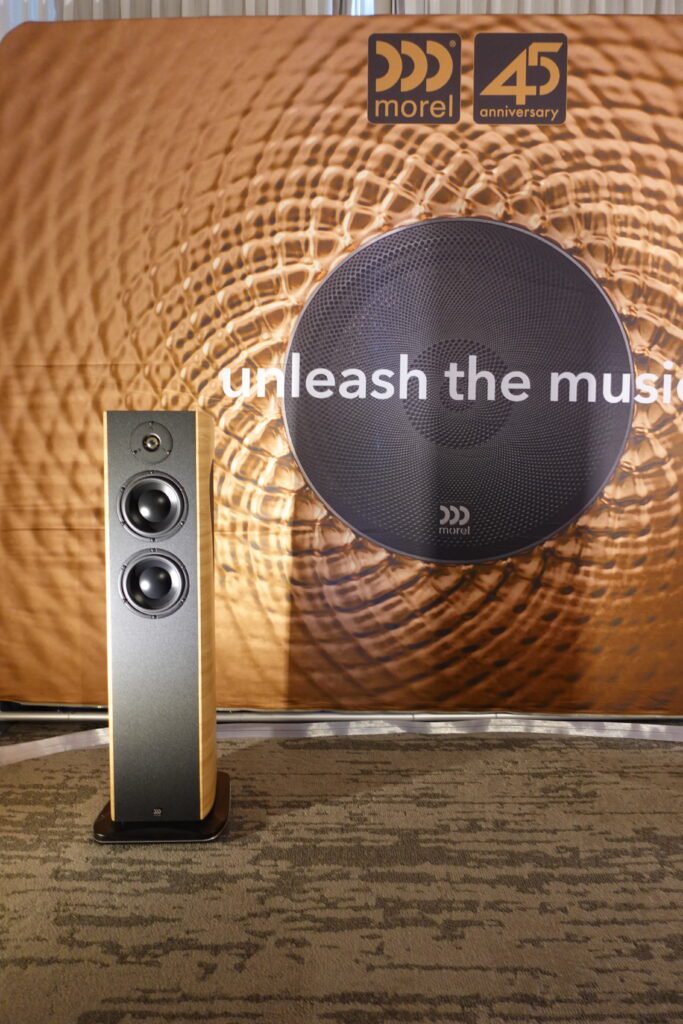
Q Acoustics
Q Acoustics‘ new flagship loudspeaker is the 5050 tower ($1,999 per pair), distributed by Fidelity Imports. More details on this design are here. It’s seen here coupled with the Gold Note Valore 425 turntable ($2,199), the PH-1000 phono stage ($11,999), the IS-1000 integrated amp/streamer ($6,299), Gold Note’s matching rack, and cabling from QED and Titan Audio.

Soulution Audio
In one of many rooms run by distributor Axiss Audio, Swiss audio experts Soulution Audio revamped the brand’s ‘entry-level’ 300 Series. On demonstration were the 350 MM phono stage (16,500CHF, fed by a Transrotor turntable), the 360 DAC (18,500CHF, fed by an Innuos PULSAR streamer), 326 preamplifier (16,000CHF, replacing the popular 325), and 120W 312 power amplifier (20,500CHF, replacing the 312 power amplifier). A 331 integrated amplifier (25,000CHF, replacing the 330 integrated amp) was on show, too. These new amps trickle down the ultra-wide bandwidth performance of the 500 and 700 Series Soulution models, and now sport vastly improved switch-mode power supplies. The system powered a pair of Gauder Akustik Capello 100 floorstanding loudspeakers ($20,000/pair) and was played through Tara Labs cables.
There was a larger system featuring the flagship Gauder Akustik DARC 250 Mk II powered by Soulution’s 500 series electronics, but the room was always full to bursting whenever I tried to get in. That’s always a good sign.

Having not been to a US audio show for five years, I forgot a few things. I forgot how often you hear ‘St James’ Infirmary’, the acoustic version of ‘Hotel California’, and ‘Keith Don’t Go’. I also failed to remember just how dark most rooms are, and how photographing black audio products set against a black background in a darkened room is a ‘challenge’ without additional lighting or a tripod. But I also forgot how polite and friendly American show-goers can be: exhibitors and attendees.
The high-end audio industry collectively left CES in the middle of the 2010s with no immediate replacement in the US. AXPONA 2024 stepped up to the plate at last. It’s not without its challenges—it still needs to become more of a venue for international visitors and dealers, both foreign and domestic. But this year, the show has thrown down a gauntlet to its rivals.






